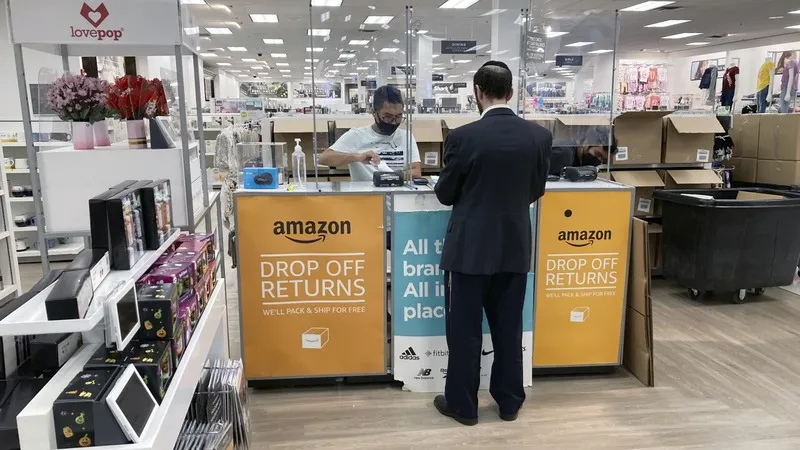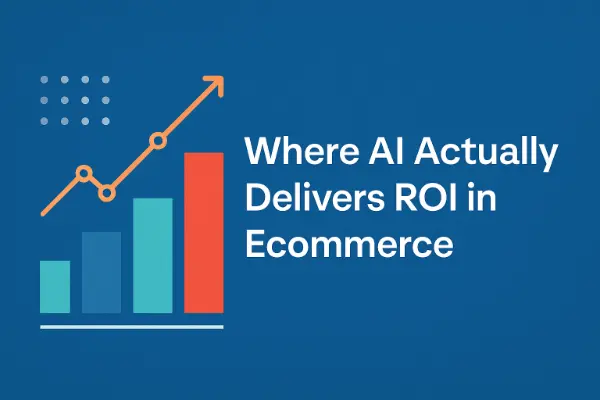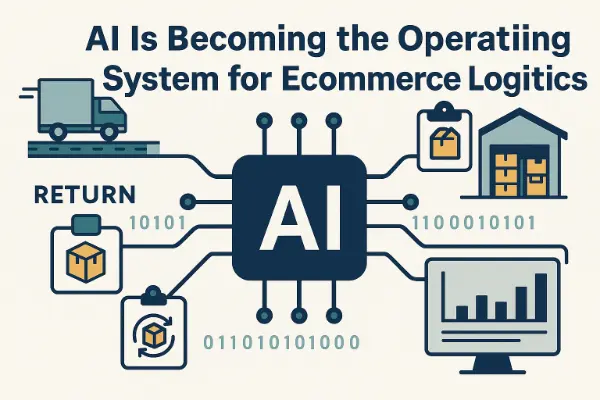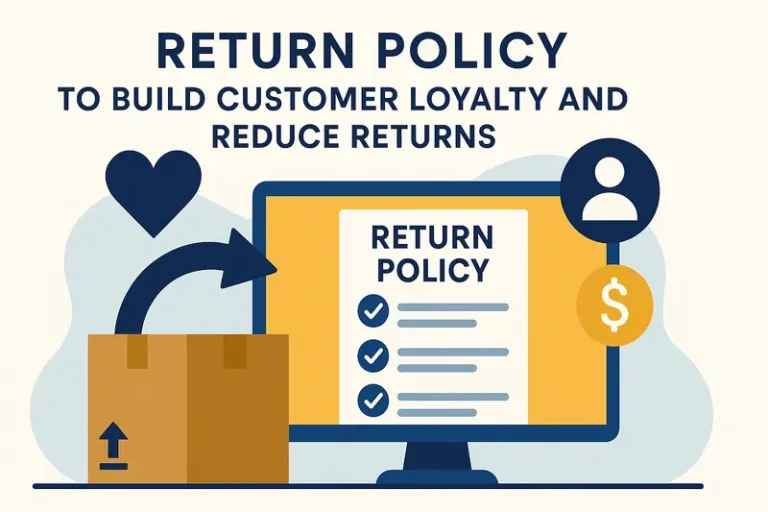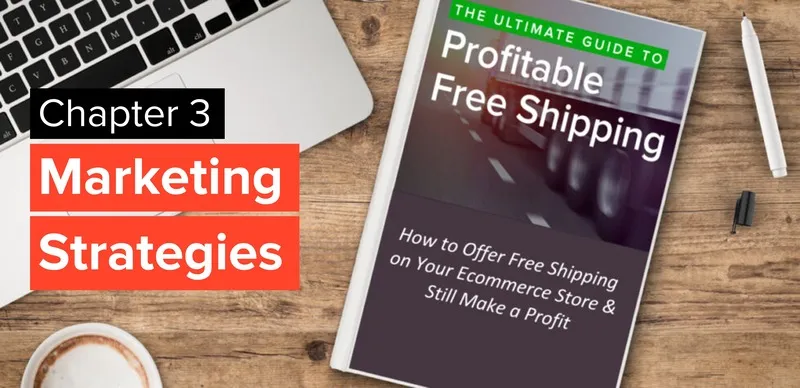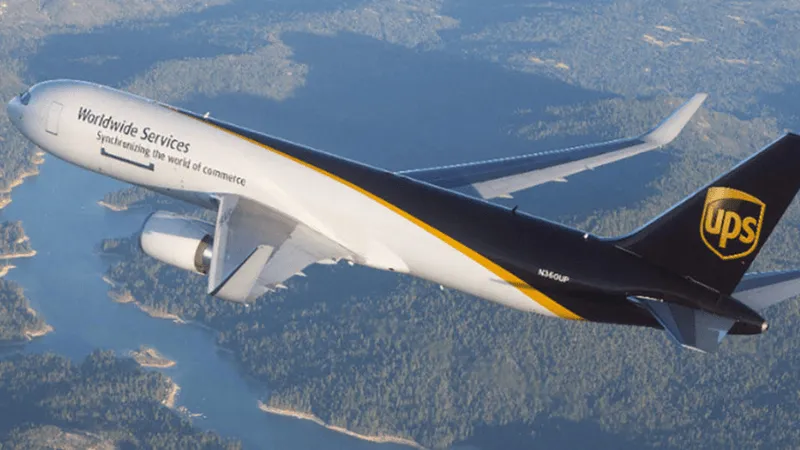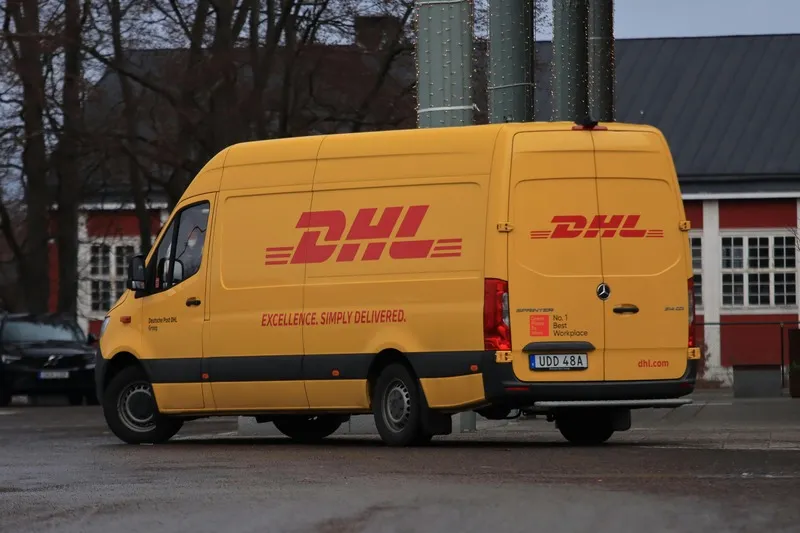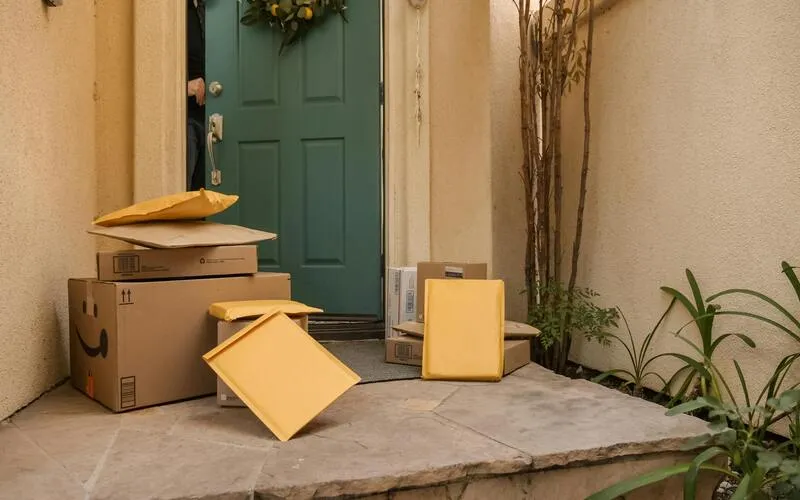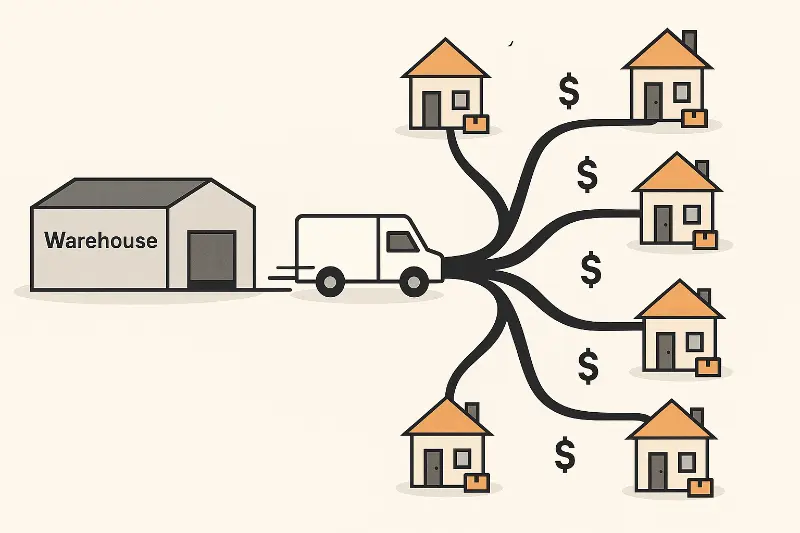Top 5 Pricing Strategies For Making Free Shipping Profitable
Pricing is one of the most determining factors of a customer’s buying decision. While customers naturally gravitate towards the lowest price, this expectation is now the norm thanks to marketplaces placing a high importance on low final prices (which includes the list price and shipping cost). If you look at any product page in Amazon, very likely the Seller who has the Buy Box also has the cheapest offer. This price expectation puts pressure on online Sellers to set a “just right” price that is both low, but low enough to cover free shipping. As a result the cost of shipping is an important component of online product pricing.
In this article, we will talk about five ways to recover your shipping costs using strategic pricing strategies:
1. Include Shipping Costs in Product Prices
Remember the last time you were irritated about hidden resort fees during hotel checkout? Or that mysterious additional tax you didn’t know about when traveling to a new city? Similarly, customers perceive a surprise shipping charge negatively, which might lead to cart abandonment.
However, the shipping cost is an inseparable part of selling online. There should be no reason to treat this cost separately. What if you included the shipping cost in the price of the item?
Imagine having to pick between these two options for something you’re about to buy:
- Option 1: $30 + $5 shipping charge
- Option 2: $35 with free shipping
Bill DAlessandro, from consulting firm Rebel CEO, ran this very test for a skincare product and found that including shipping in the product cost (Option 2) converted twice as many shopping carts. Several other studies have shown that customers are more likely to abandon the shopping cart when they see a shipping charge added during checkout, the top reason by more than 2-fold!
How do you distribute shipping costs to individual item prices? One approach is to change the pricing of items below your free shipping threshold to include a portion of the expected shipping cost.
Say a merchant offers free shipping for orders of $50 or more, and the average shipping cost is $5. Start by converting your sale price to a percentage of the free shipping threshold, and then add that percentage of the average shipping cost to the item price. For example, a $25 item is 50% of the $50 free shipping threshold, so add 50% of the shipping cost to the item price ($2.50), for a new sale price of $27.50. Similarly, a $10 item is 20% of the $50 free shipping threshold, so add 20% of the shipping cost to the item price ($1.00), for a new sale price of $11.00.
The advantages of including shipping costs in the product price are:
There are other factors that you might want to keep in mind before using this method:
Make Returns Profitable, Yes!
Cut shipping and processing costs by 70% with our patented peer-to-peer returns solution. 4x faster than traditional returns.
See How It Works2. Offer Free Shipping on Select Items Only
It is tough to offer free shipping for your entire product catalog when you sell everything under the sun, big or small. But you can thoughtfully select which items to offer with free shipping.
It is often the items with low-margins, heavy-weight, and big-size that suffer losses from shipping costs. This should not stop you from providing your customer with free shipping on higher-margin items where the shipping cost is not a big chunk of the product price.
The key is communicating it effectively to the customer. Being clear and upfront about such restrictions will help customers navigate your page easily and with trust. Here’s an example that Neil Patel demonstrates in this blog where the Seller offers free shipping on all footwear SKUs:

Source: https://neilpatel.com/blog/make-free-shipping-profitable/
A more subtle way to offering free shipping on specific products is setting a free shipping threshold that meets exactly the item you plan to offer free shipping. For example, if your website sells shoes starting at $75 and socks starting at $12; setting free shipping at $75 allows you to offer free shipping to anyone who buy at least 1 pair of shoes, but will only offer free shipping if someone orders 7 pairs of only $12 socks.
He goes on to show how there is a marked improvement in net profits with this experiment despite a reduction in margin per SKU. The increase in sales yields more revenue and higher overall profitability.
Offering free shipping on a limited SKU selection has its benefits:
Keep in mind these few things while implementing this shipping strategy:
3. Enable Free Shipping on Large Orders
Setting a minimum order value to unlock free shipping increases your revenue, creating the margin needed to recover your shipping costs. But this shipping strategy does not work for everyone.
Publishing a minimum order value encourages customers to target a particular shopping cart subtotal such as $50. But if you have a limited product catalog, the customer may abandon the purchase because they cannot find additional relevant items to purchase. In this case, it may be easier to nudge them with a prompt that says, “free shipping when you buy 3 or more”, targeting an order quantity rather than an order subtotal. It may sound silly, but not all customers would think of increasing the item quantity to achieve the free shipping threshold.
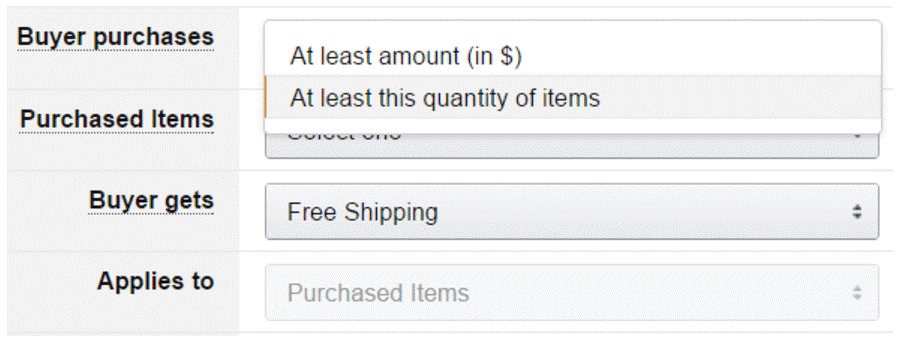
It works best for consumables that customers regularly buy, like personal care or household items. For these products, customers are used to expecting savings when buying in bulk. The end goal is similar to the minimum order value in that the merchant can increase the average order value and ship the items together to decrease the shipping costs.
The advantages of bulk/quantity-based free shipping offers are:
A possible hindrance to something like this would be:
4. Introduce Flat Rate Shipping
If for some reason it is not possible to include shipping costs in your product prices, there is still a way to manage customer expectations. Customers will have less anxiety about shipping charges if they know the flat rate shipping cost upfront, regardless of how much they spend.
Online shoppers must take into account many factors when deciding on a purchase. Making the shipping cost clear and simple will make the shopping experience easier, and customers respect the transparency.
You should consider your average margin per unit and average shipping cost to calculate a profitable flat rate to charge. Here’s an example of an online Seller advertising flat rate shipping very effectively: “We don’t want our customers to experience sticker shock when they see the shipping rates at our store. Also, we want to make our online shopping experience straightforward and having a $10 Flat Rate Shipping charge lets customers quickly calculate their costs. That can’t be a bad thing, right?”
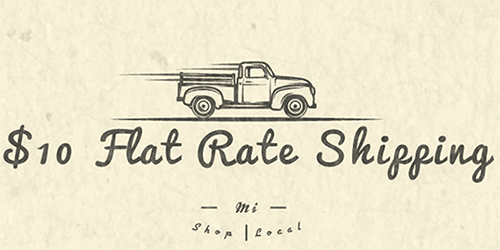
Source: https://www.giftbasketsfrommichigan.com/blog/gift-baskets/everyday-10-flat-rate-shipping
There are many flat rate services to choose from (size and weight restrictions apply):
- FedEx One Rate has several options for overnight and 2-day flat rate shipping, depending on what time of day the package needs to be delivered. Pricing depends on the size of the package (dimensions) and how far it’s traveling (there are 3 zones defined). FedEx offers free packaging included with each service, which is a nice perk to keep cost down.
- UPS Simple Rate has more flexible shipping speeds accommodating next day, 2-day, 3-day, and 5-day transit times that in both air and ground services. There are no zones defined by UPS, so one rate is truly one rate, and a packaging subsidy is available for UPS Digital Connections members.
- USPS Priority Mail Flat Rate delivers within 1 – 3 days, though it’s not guaranteed like FedEx and UPS flat rate services are, and only considers a single zone like UPS. Rates are cheaper when purchased using an online solution as compared to purchasing at a post office window, and Flat Rate boxes and mailers come in the widest variety of sizes and are free for shippers.
Some of the advantages of flat-rate shipping are:
You should be careful about the following:
Convert Returns Into New Sales and Profits
Our peer-to-peer returns system instantly resells returned items—no warehouse processing, and get paid before you refund.
I'm Interested in Peer-to-Peer Returns5. Adopt a Dynamic Shipping Charge
Customers may sometimes find your competition is offering the same items at lower prices. But in some cases, your warehouse may be closer to the customer allowing you to ship faster and cheaper than the competition, creating the opportunity to leverage your proximity by offering a more attractive shipping option.
To adopt a dynamic shipping price strategy, ask the customer for their zip code during checkout and use it to determine your actual cost and transit time using real-time rate shopping across all your carriers and services.
Maybe you want to determine if free shipping should be offered or not. Perhaps it’s used as a surprise and the enchanted customer feels that they’ve won something, increasing conversion rates.
Typically ecommerce Sellers calculate shipping charges using the average shipping rate for all their sales, a combination of different zones, sizes, and weights. So, some customers pay more than they should for shipping while others pay less. If the shipping charge imposed on the customer is higher than other Sellers, because of the kind of item you ship (heavier, larger, for example), your cart abandonment rate will be higher.
By collecting the zip code, there is an opportunity to charge the customer the shipping fee tailored to them, encouraging them to buy from you. You can get real-time estimates of shipping rates right from your shipping solution or Order Management System (OMS) by connecting it to the checkout page. This approach also ensures that your shipping cost is covered, effectively taking it out of the equation.
This blog by Squarespace explains one way to do it in great detail, including how to add a markup to create a profit center from your exceptional negotiated rates.

Source: https://support.squarespace.com/hc/en-us/articles/213022907-Carrier-calculated-shipping
The big benefits of having this system are:
There are repercussions to imposing a dynamic shipping charge:
No More Return Waste
Help the planet and your profits—our award-winning returns tech reduces landfill waste and recycles value. Real savings, No greenwashing!
Learn About Sustainable ReturnsSummary
The reality of modern ecommerce is that free shipping is no longer a luxury, it’s an expectation. But it doesn’t have to be a burden on your bottom line. By integrating shipping costs into your pricing strategy, selectively offering free shipping, or using dynamic pricing models, you can create an approach that aligns with customer expectations while keeping your business financially healthy. The key is to experiment, track results, and adjust as necessary…what works for one business may not work for another. When done right, free shipping can become a powerful conversion tool that boosts sales, improves customer loyalty, and ultimately drives long-term profitability.
Download The Ultimate Guide to Profitable Free Shipping
Frequently Asked Questions
How to price for free shipping?
If the average shipping cost is $5 per order, that means you would lose $5 each time you provided free shipping. If, however, you increase product prices by 20% so the average product price is $10 or more, you can offset the cost of shipping on an average order.
Does offering free shipping increase sales?
Yes, offering free shipping can increase sales. Numerous studies show that free shipping is a key factor in purchasing decisions.
How do retailers afford free shipping?
Some merchants ask customers to cover shipping expense on smaller, lower margin orders. Shoppers are incented to buy more, since additional items ship for free. As the order size increases, overall gross margin goes up, covering the incremental shipping cost increase. Another option is to include shipping costs in product prices.
What is a good free shipping threshold?
Knowing how much an average customer spends per transaction can provide a better idea of what a business’ minimum order value for free shipping should be. A free shipping threshold should be slightly (about 30%) above the average order value to encourage customers to add more items to their cart.
How to offer free shipping without losing money?
The simplest way to make free shipping work for your shop is to price your items to include the shipping cost in the item list price. You can choose to offer free shipping to buyers only located in your country, or to all buyers around the world based on your shop’s needs and customer demographics.

Turn Returns Into New Revenue
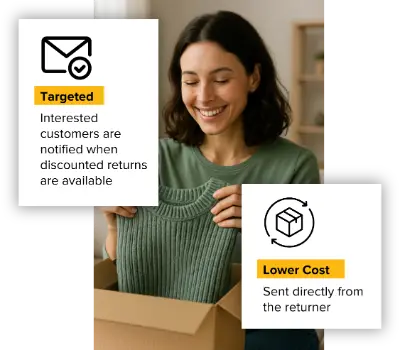
Top 8 Marketing Strategies For Making Free Shipping Profitable
In this article
 21 minutes
21 minutes
- Intelligently Set Minimum Order Value
- Offer Free Shipping with Loyalty Programs
- Offer Free Shipping for a Limited Time Window or Amount
- Offer Free Shipping at Peak Seasons of the Year
- Offer Free Shipping on Returns Only
- Offer Free Shipping to First-Time Customers Only
- Offer Date-Certain Shipping
- Consolidate and Deliver Multiple Orders on Fixed Dates
- Summary
- Frequently Asked Questions
Free shipping isn’t just a perk, it’s a powerful marketing tool that influences buying decisions and customer loyalty. It’s a deciding factor in where and how people shop. Shoppers are bombarded with choices, and offering free shipping can be the difference between an abandoned cart and a completed sale. However, without a strategic approach, it can also become a financial burden that eats into profits. The key lies in leveraging free shipping as part of a well-planned marketing strategy; one that drives conversions, increases average order value, and strengthens customer retention. In this article, we’ll explore 8 innovative ways to make free shipping work for your business without sacrificing your bottom line.
1. Intelligently Set Minimum Order Value
It would be best to avoid delivering low-cost items for free as their shipping costs are often higher than the cost of the item itself, leaving only so much margin. Setting a minimum order value in your shopping cart helps you generate enough margin to recover some of the shipping cost. One study has revealed that about half of the shoppers will add additional items to their shopping cart just to qualify for free shipping, making a great case for setting a minimum order value for free delivery.
However, be mindful that there’s a fine line between setting a minimum order value that will increase total sales and one that will drive away the customers. There are different ways to test what that right amount is. Don’t set a limit too far away from your average order value. It should be just enough for customers to add a couple more items at most.
The following is a simple model developed by a data analytics company, RJ metrics:
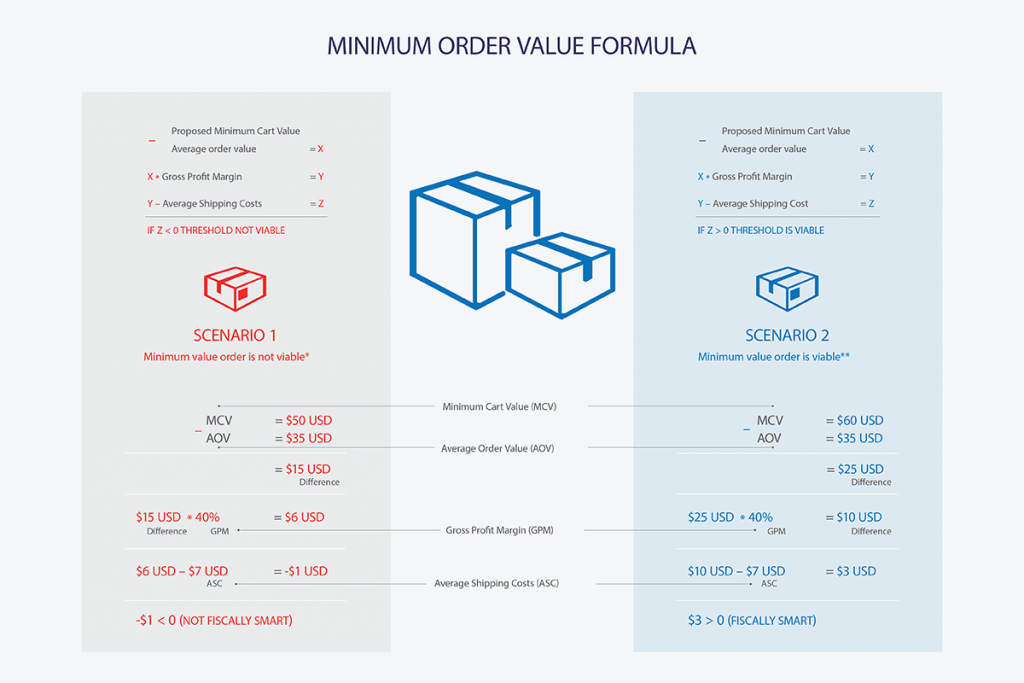
To learn more about calculating your minimum order value, check out this guide by DSers.
2. Offer Free Shipping with Loyalty Programs
Loyalty programs are customer memberships offered by retailers in exchange for various perks, including free shipping. The customer is charged a fee or must collect points against regular orders to enjoy the perks of the membership. It is designed to encourage repeat purchases, enabling retailers to absorb the shipping costs.
Some big retailers offer the membership to customers for free; solely in exchange for basic personal details such as email account, name, address, gender, and birthday. Retailers use this information to encourage more purchases through targeted marketing efforts. They leverage customers’ purchase history and demographics to send special offers and personalized catalogs.
The increase of purchase frequency from a loyalty program is reflected in the customer lifetime value (CLV), which is the basis for most loyalty programs. CLV refers to the dollar amount that a customer is worth to you between their first and last purchase from your business. It is easy to calculate with a formula:
CLV = ((Average Order Value) x (Average Gross Margin) x (Average Number of Transactions per customer over a year) x (Average Lifespan of a Customer in years)) + ((Loyalty Program Fee per year) x (Average Lifespan of a Customer in years))
For a loyalty program to be successful, CLV should increase when compared to CLV without the loyalty program. Let’s walk through an example. Before loyalty programs, if your Average Order Value was $50, Average Gross Margin was 20%, the Average Number of Transactions per customer over a year was 8, and customers only stayed for 1 year (Customer Lifespan), then:
CLV: ($50 x 20% x 8 x 1) + $0 = $80
Now suppose you offer free shipping for a yearly fee of $50, you’ll see a few changes in your metrics. Your Gross Margin goes down to 10% because of $5 assumed average shipping expense per order, but the customers are likely to stay with you for twice as long (that is two years). In this case:
CLV: (($50 x 10% x 8 x 2) + ($50 x 2)) = $180
Since there is an increase in CLV despite a decrease in Gross Margin, the loyalty program worked in this case. And this estimate has not accounted for increased purchase frequency from customers wanting to take advantage of the free shipping.
Even if you don’t charge a monthly fee, the point system is a good alternative. The points-based system encourages customers to keep shopping and take advantage of free shipping. Also, it can be designed to ensure there is enough additional margin to make up for shipping costs. Another driver of sales are tailored offers and product catalogs.
Make Returns Profitable, Yes!
Cut shipping and processing costs by 70% with our patented peer-to-peer returns solution. 4x faster than traditional returns.
See How It WorksIn some cases, loyalty programs such as supermarket cards end up being a discount program without getting any more loyalty from the customer. Customers get membership cards from all supermarkets they visit and either shop all the discounts across all supermarkets or shop for the one with the most discounts on a given shopping trip. So it’s not really a loyalty program as much as it is data collection that helps the store offer even more discounts by way of additional tailored coupons. Therefore, it is necessary to design loyalty programs to increase your profitability and reward increased spending.
A few good examples of membership programs designed around free shipping would be Instacart, Shipt, and Walmart. Instacart and Shipt’s annual memberships provide free grocery deliveries for orders over $10 and $35, respectively, at $99 per year, which basically encourages a monthly shopping behavior from its members (other service fees apply). Walmart+ is Walmart’s subscription-based loyalty program with a price tag of $12.95 per month or $98 per year, with no order minimum.
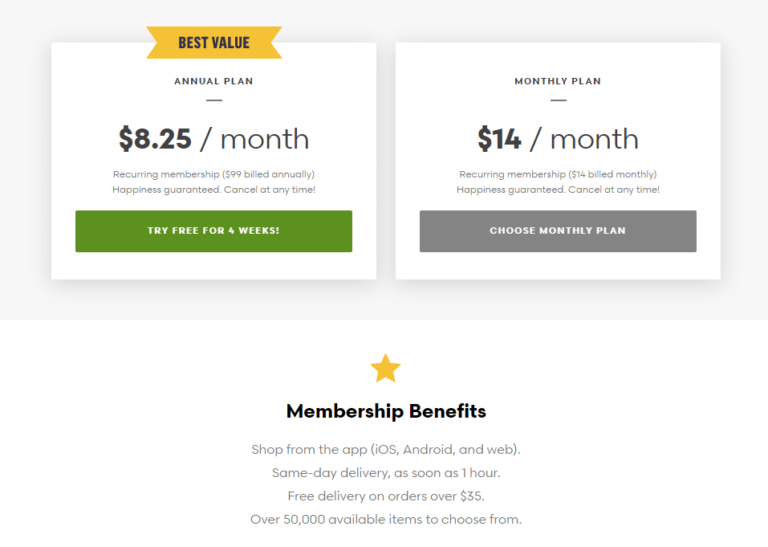
A few retailers that do unpaid loyalty well are Sephora, ShopRunner, and Starbucks. If you look at the Free Sephora Beauty Insider program, it rewards dedicated beauty shoppers with more than discounts and free shipping; it offers a free birthday gift, exclusive events, and other extra frills. Customers are encouraged to buy more and stay on to reap the benefits tailored right for them.
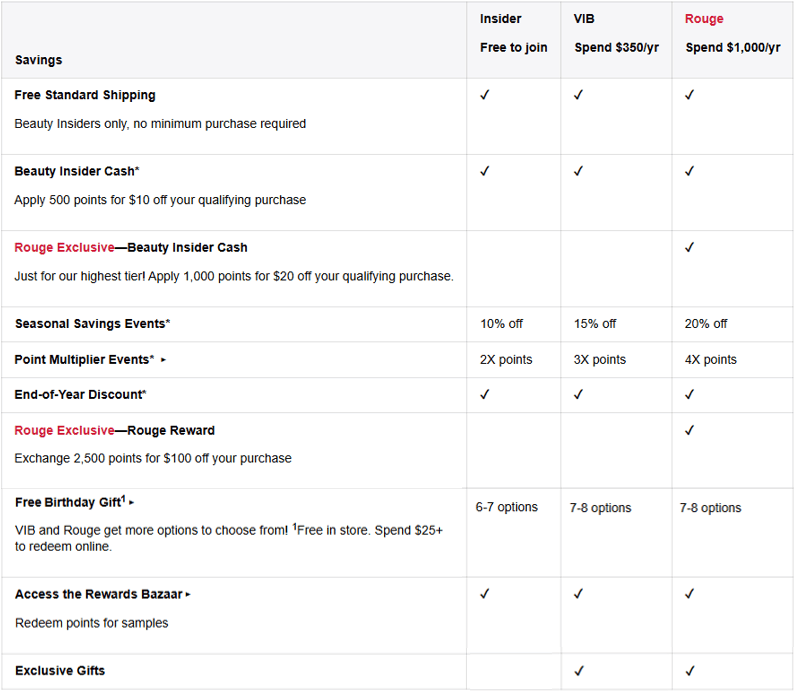
Another unique membership program is Shoprunner, which partners with high-end luxury retailers to provide free 2-day shipping and free returns for its members. The membership is currently free for customers, potentially charging the retailers for the express delivery service.
The well-known Starbucks Rewards program is points-based and rewards customers with stars based on the number and value of their purchases that can be redeemed for free drinks and food. Going beyond basic points, it comes with a free birthday item, access to exclusive games and games, free refills on certain drinks, skip-the-line with Order Ahead, and more.
3. Offer Free Shipping for a Limited Time Window or Amount
If you’re not yet set to offer free shipping all the time, free shipping for a limited time serves as a great marketing tool in many cases. The purpose of providing free shipping here is to encourage additional purchases and build a relationship with the customer for future business.

Very simply, you need to set a target of future incremental sales from customers who have used the free shipping promotion. The margins from incremental sales should cover the costs of shipping during the offer and help you assess the success of your campaign. Additionally, just acquiring more customers could increase brand awareness, which will attract new prospects organically in the future.
One way to make this limited-time offer work without sacrificing too much profitability is to adopt value limits. Like in the cookie example above from Levain bakery, the free shipping discount is limited to $20 because the cookies need to ship using 2nd Day Air services, which can quickly get very expensive. The amount is enough to provide free shipping to neighboring states but will not be enough to cover cross-country shipments.
If you have a high engagement rate on your web store but a low conversion rate, that means customers need a nudge to complete the checkout. Offering a limited-time free shipping offer will excite prospective buyers and turn window shoppers into paying customers. Temporary free shipping can be an excellent investment to boost sales during slow periods. It is essential to be careful about frequency to not habituate the customers to free shipping.
You can be creative by offering a limited time offer through different shipping strategies:
- Offer free shipping on next purchase to customers only after checking out. This acts as a reward for shopping with you and encourages the customer to explore your catalog for future purchases.
- Offer customers free shipping when they share their purchases on social media or after writing a product review. Here, you are using free shipping to increase your exposure and potential sales via consumer generated content.
- Send a free or discounted shipping promo code by email or text if a cart has been abandoned.
The broad idea is to invest in the shipping cost for a few orders to acquire more customers and get more future orders.

4. Offer Free Shipping at Peak Seasons of the Year
Free shipping is not a value creation strategy if you do not have enough sales to increase your bottom line with reduced unit margins. Therefore, offering free shipping during peak season could be a better idea. One, there is potential for more sales, and two, you need to be competitive when everyone is offering some kind of promotion. Free shipping is “a cherry on top” of any other promotion.
Every business has a seasonality to it. Depending on your products, test out free shipping offers during different times of the year such as Christmas, Mother’s Day, Valentine’s Day, Amazon Prime Day and Back-to-School.
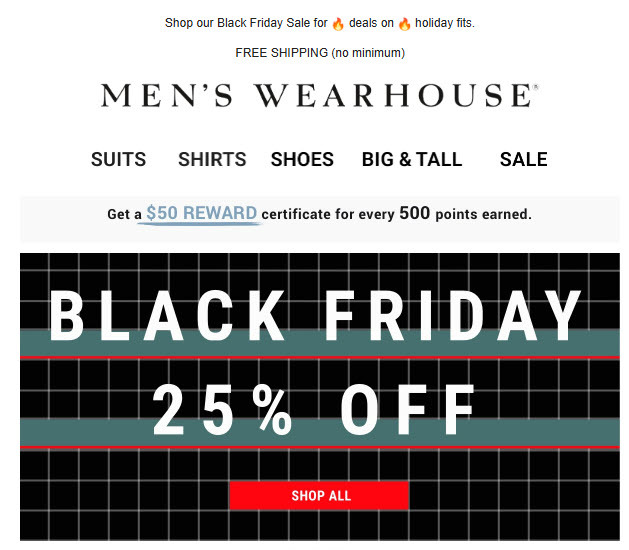
Third-party Sellers on various marketplaces such as Amazon could also benefit from offering free shipping during their flagship sale day. Increased customer traffic on Amazon during Prime Day can work in your favor only if you can stand out. Even if you don’t offer free shipping all year round, temporarily offering free shipping could help you convert a larger share of the increased traffic to the site.
Best Buy has been offering free shipping to all customers during its peak holiday sales season. Target, on the other hand, offered free expedited shipping before Christmas on most of its items. The key was to increase sales during the peak season and get an even bigger share of the pie than usual.
The objective of this shipping strategy is to increase profits by increasing gross sales at a lower margin but be mindful of not losing money on every sale. Customer acquisition can be a secondary goal, but the primary purpose of this shopping lift should be to increase your overall profit. It’s possible that customer spending on your site during the off-peak season might not cover the promotional free shipping losses incurred during the peak season, so you may have to wait until the following year for a possible pay-off. Therefore, be selective about what products you offer with free shipping.
Convert Returns Into New Sales and Profits
Our peer-to-peer returns system instantly resells returned items—no warehouse processing, and get paid before you refund.
I'm Interested in Peer-to-Peer Returns5. Offer Free Shipping on Returns Only
The prominence of online shopping has made returning products much more important in recent years. Customers care about the ability to return the item if they are not satisfied with it almost as much as free shipping. Therefore, there is an opportunity to attract customers by offering free shipping on returns as a feature of shopping with you.
There are a few categories where the customer thinks about returns even before they have made the purchase. These are the products that conventionally require a trial. Anything in the fashion category, house décor, and jewelry fit are example categories.
When customers shop for clothes, they cannot be 100% certain of the fit or how they would look wearing the product. The risk of losing the conversion is higher if returns are complicated (e.g., how to print a shipping label, how to mail the return, who pays the return shipping and how much will it cost, etc.). This creates a lot of hesitation to complete an online purchase unless the return policy is simple, clear, and customer-friendly. Free returns take the fear out of monetary loss from unsatisfactory purchases. For example, kurufootwear.com, an exclusively online footwear store, advertises free returns explicitly.
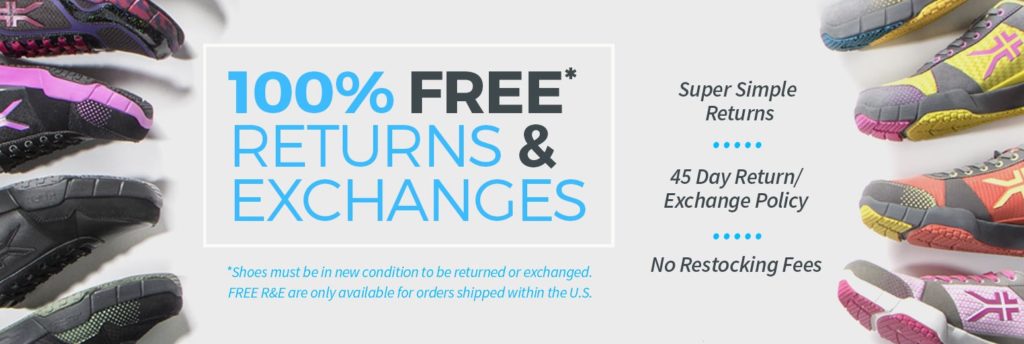
Free returns can become very costly for items that have high shipping costs such as a couch or television. Therefore think about what products are worth offering with free return shipping. Products that are light and small with good gross margins are good candidates as the reverse shipping costs won’t eat up all your profits. Expensive or high-end luxury products are prime examples of products that enjoy a good margin and are excellent candidates for free return shipping.
Nevertheless, try to keep returns to a minimum by helping customers choose the right item in the first place. This can be done by having a detailed product information section, several size charts, FAQs, and useful visualizations.
Besides making it free, make sure that the customer receives hassle-free service during the return process. This can be achieved by giving them clear instructions on the site or including a pre-paid return shipping label inside the original package itself.
6. Offer Free Shipping to First-Time Customers Only
Getting customers to try your products can be the biggest hurdle in growing your ecommerce business. Offering free shipping could be the nudge that customers need to buy from a new online Seller. Such an offer makes sense for a retailer who is looking to broaden its base or acquire new customers.

It is a simple but effective shipping strategy. Many successful businesses, such as Postmates or Grubhub, have used it in the past to get the customer on board. Once the customers realize the value of the service, they stay on to become regular paying users.
Whether you’re an existing ecommerce Seller with a new product offering or a brand new online store, free shipping on the first order can get the product out into the hands of new customers. This is especially useful in consumable categories like pet food, coffee and vitamins where customers tend to order the products at routine frequency but are not sure if they are ready to commit to the product or the Seller just yet. It can be considered as an online version of free sampling.
7. Offer Date-Certain Shipping
When free shipping is not an option, showing guaranteed delivery dates helps manage customer’s shipping expectations. Online Sellers should explore offering customers options for different delivery dates with different shipping charges. The slowest one might be offered free, but it still has a guaranteed date of delivery.
Guaranteed dates also help customers to make decisions faster because it takes out the mental math of “delivers in 5-7 business days”. Amazon and Walmart have used this shipping strategy successfully for a long time. Amazon has increased the accuracy of delivery date moving from a range to a specific date for this very reason.
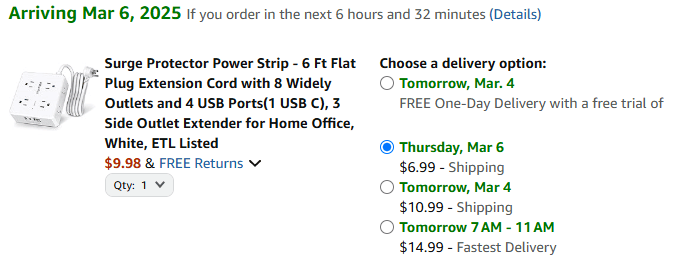
A Seller should keep a couple of things in mind while implementing date-certain shipping options. They should create a sense of urgency by showing how long the delivery date promises will be valid before they change based on same-day shipping cutoff times (e.g. “If you order in the next…”). Moreover, the tracking should be made available to the customer in great detail to create transparency and further decrease anxiety.
Such options ease the customer’s mind because they can see the trade-off between spending more on shipping compared to the resulting delivery delay. This lets different types of customers choose and complete purchases depending on which tradeoff has a higher priority.
No More Return Waste
Help the planet and your profits—our award-winning returns tech reduces landfill waste and recycles value. Real savings, No greenwashing!
Learn About Sustainable Returns8. Consolidate and Deliver Multiple Orders on Fixed Dates
Explore the possibility of consolidating all your orders and ship them all together on dedicated days to decrease overall logistics costs. This strategy can be used in conjunction with zone-skipping and applies to 1) fulfilling single-customer orders, 2) fulfilling multiple orders for the same customer, and 3) transporting goods between your warehouses and B2B customers such as retail outlets.
For the first one, examples would include crowdfunding campaigns and preorders, where the availability of a product such as a Kickstarted Boardgame project or new release music becomes available all at once in bulk. By presetting customer expectations about shipping and estimated delivery dates, you can offer economical shipping options by processing orders in bulk (just one time), thereby reducing labor and related fulfillment costs as well as longer transit options such as hybrid shipping services.
For the second one, this works well if you have repeat business coming from the same customers (DTC or B2B) on a recurring schedule. By grouping orders from a customer throughout the week, for example, and shipping all orders together on a pre-determined day of the week, (e.g. “Amazon Day”), shipping and logistics cost are minimal compared to shipping them all in real-time.
For the last one, this works well if you have a brick-and-mortar presence. The main idea is delaying inventory replenishment until you have a full truckload of goods per shipment (going out or coming in). Shipping efficiently (a full truck) reduces the logistics cost of each item carried. Having a good demand forecast is key in minimizing stockouts and estimating optimal shipment schedules. A set shipment schedule provides carriers certainty of future business and can help in your negotiations as well.
Summary
Free shipping isn’t just about meeting customer expectations, it’s a tool that can be leveraged to grow your business. By structuring your promotions thoughtfully, whether through minimum order thresholds, loyalty programs, or limited-time offers, you can encourage higher or more frequent spending while keeping costs under control. The best marketing strategies don’t just attract customers; they create long-term relationships. With the right approach, free shipping can not only increase immediate sales but also build a loyal customer base that returns again and again, making it a cornerstone of your long-term success. The secret lies in understanding your margins, leveraging data-driven insights, and continuously optimizing your approach.
Download The Ultimate Guide to Profitable Free Shipping
Frequently Asked Questions
Is free shipping a marketing strategy?
Free shipping is a marketing strategy by online stores that allow shoppers and customers not to have to pay an additional fee when placing orders for particular items. From the online shopper’s perspective, getting no additional cost to an item purchased from a website makes shopping much easier.
How to advertise free delivery?
Consider offering free shopping when purchasing 3 or more items. Another example of promoting this method is: let’s say a customer reaches the checkout page, you can recommend other products with a message saying, “add one more product to your cart to be eligible for free delivery.”
Does Free Shipping Increase Sales?
Free shipping significantly impacts sales by reducing cart abandonment rates and increasing purchase conversions. Studies indicate that customers prefer free shipping over paid options, which can lead to higher sales volumes.
What are free shipping promotions?
Free shipping is an increasingly popular option for online shopping, where customers do not have to pay an additional shipping charge. Free shipping is attractive to customers who appreciate simple pricing structures, making it a potential competitive advantage for online businesses.
How do you determine the minimum value for free shipping?
To calculate your free shipping threshold, you need to know your average order value (AOV) and your average shipping cost (ASC). A simple formula is to multiply your AOV by 1.5 and add your ASC.
Why free shipping is not free?
For cheaper items, you simply can’t absorb the cost of shipping. If your product costs $6 and the cost of shipping is $8, you are going to lose money by offering free shipping. Your margins may differ across products, depending on the cost of manufacturing, as well as the size and weight of different items.

Turn Returns Into New Revenue

UPS Next Day Air Saver: Delivery Times, Costs & When to Use It
In this article
 6 minutes
6 minutes
- Key Takeaways
- What Is UPS Next Day Air Saver?
- UPS Next Day Air Saver vs Other UPS Services
- Delivery Times and Guarantees
- Shipping Costs and Rates
- Weight and Size Limits
- Signature Requirements
- Service Coverage Areas
- Scheduling and Pickup
- Why Ecommerce Businesses Choose UPS Next Day Air Saver
- When to Choose UPS Next Day Air Saver
- Tips to Maximize Savings
- Final Thoughts
- Frequently Asked Questions
Key Takeaways
- UPS Next Day Air Saver offers fast, overnight shipping at a lower cost than standard Next Day Air, making it ideal for urgent deliveries.
- Delivery is guaranteed by the end of the day for residential addresses, with potential money-back guarantees for late shipments, providing reliability for businesses.
- The service accommodates packages up to 150 pounds and offers substantial savings for regular shippers, benefiting industries like ecommerce, legal, and medical fields.
What Is UPS Next Day Air Saver?
UPS Next Day Air Saver is a next-day air service from UPS that guarantees packages will be delivered by the end of the next business day. It’s similar to regular UPS Next Day Air, but more affordable, with delivery typically by 3:00 PM to commercial addresses and end-of-day for residential addresses.
You still get timely delivery, tracking, and access to express shipping options, just with slightly later arrival times, ideal for businesses that want to leverage UPS without paying premium rates.
Slash Your Fulfillment Costs by Up to 30%
Cut shipping expenses by 30% and boost profit with Cahoot's AI-optimized fulfillment services and modern tech —no overheads and no humans required!
I'm Interested in Saving Time and MoneyUPS Next Day Air Saver vs Other UPS Services
Here’s a snapshot comparison of UPS Next Day Air Saver with other popular UPS expedited services:
|
Service
|
Delivery Time
|
Coverage
|
Saturday Delivery
|
Typical Use Case
|
|---|---|---|---|---|
|
UPS Next Day Air
|
By 10:30 AM
(most locations) |
All 50 states
|
Optional with fee
|
Highest-priority packages needing early delivery
|
|
UPS Next Day Air Saver
|
By 3:00 PM (commercial)
End-of-day (residential) |
48 contiguous states + limited AK/HI
|
Optional with fee
(metro only) |
Cost-effective next-day delivery for ecommerce and businesses
|
|
UPS 2nd Day Air
|
By the end of the 2nd business day
|
All 50 states
|
Optional with fee
|
Less urgent packages that can wait a day
|
Note: UPS Next Day Air Saver is not available in areas where guaranteed morning delivery (UPS Next Day Air Early) is already promised by other UPS services.
Delivery Times and Guarantees
For commercial addresses, delivery speed for UPS Next Day Air Saver is guaranteed by 3:00 PM; however, UPS now uses zone-based time windows, so in some metro areas, Air Saver commercial deliveries may be later than 3:00 PM. For residential addresses, packages arrive by the end of the business day (“end-of-day” is typically defined as 7:00 PM, but deliveries have been known to deliver after 11 PM local time in some cases). These guaranteed delivery times make it a strong alternative to pricier services like UPS Next Day Air Early AM.
UPS may offer a money-back guarantee for late deliveries on eligible shipments, though coverage varies by zone, season, and contract. You’ll want to confirm this on the UPS website or contact UPS customer service if timing is critical.
Shipping Costs and Rates
The next-day air saver cost depends on multiple variables:
- Package’s weight
- Dimensions (dimensional weight may apply)
- Origin and destination
- Chosen shipping methods and optional services
Businesses often see cost savings of $2.95 to $10.23 per shipment versus standard Next Day Air rates, depending on weight, zone, and contract rates. That makes the next-day air saver package a favorite for ecommerce shipping and bulk senders.
Here’s an illustrative example from the current UPS Rate and Service Guide. These rates assume actual weight (not dimensional weight), with no declared value, accessorials, or Saturday delivery. Important caveats: Rates vary by account volume, service tier, fuel surcharge, and peak-season surcharges. Always confirm pricing with your UPS rep or shipping software.
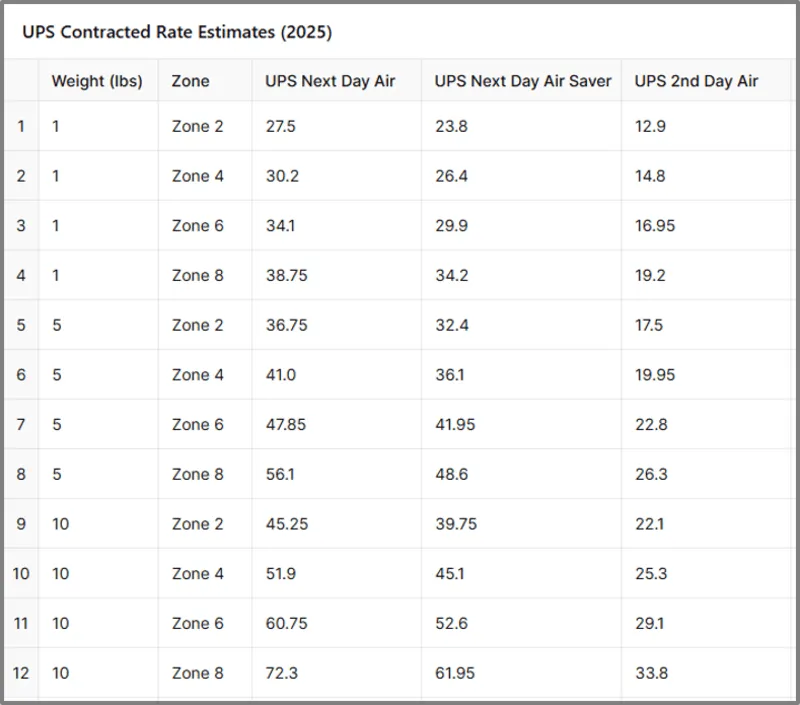
Weight and Size Limits
- Maximum weight limit: 150 lbs per package
- Max size: 108 inches in length, or 165 inches in combined length + girth
Exceeding these limits can require freight classification or other UPS services.
Looking for a New 3PL? Start with this Free RFP Template
Cut weeks off your selection process. Avoid pitfalls. Get the only 3PL RFP checklist built for ecommerce brands, absolutely free.
Get My Free 3PL RFPSignature Requirements
- Commercial address: Signature is required for delivery
- Residential addresses: No signature required unless requested
This flexibility balances customer expectations with security and speed.
Service Coverage Areas
UPS Next Day Air Saver is available across the 48 contiguous states, with limited availability in Alaska and Hawaii. It’s not available in areas already covered by guaranteed morning delivery under UPS Next Day Air Early.
International shipments require separate UPS Express shipping services.
Scheduling and Pickup
- Cutoff times: Typically 4:00 PM to 6:00 PM local time
- Can specify pickup windows and reference numbers
- Missed pickups can be rescheduled via your UPS account
UPS also supports Saturday delivery for Air Saver shipments, but not by default. Saturday delivery for Air Saver is only available in limited metro areas, and often requires an upgrade to Next Day Air or an additional surcharge.
Why Ecommerce Businesses Choose UPS Next Day Air Saver

If you’re shipping high volumes or dealing with customer demands for one-day delivery, UPS Next Day Air Saver is the best compromise between fast delivery and affordable shipping.
Industries that benefit:
- Ecommerce & DTC brands
- Medical and pharmaceutical shipping
- Legal and financial services
Using Air Saver helps brands:
- Meet customer expectations for speed
- Reduce shipping charges while maintaining quality
- Handle urgent shipments reliably
- Boost sales with competitive delivery options
When to Choose UPS Next Day Air Saver
- You want overnight shipping but don’t need early AM delivery
- You’re sending to commercial addresses where 3 PM is sufficient
- You’re balancing shipping speed and budget
- You’re optimizing shipping costs during peak ecommerce cycles
Use UPS Next Day Air Saver when:
Scale Faster with the World’s First Peer-to-Peer Fulfillment Network
Tap into a nationwide network of high-performance partner warehouses — expand capacity, cut shipping costs, and reach customers 1–2 days faster.
Explore Fulfillment NetworkTips to Maximize Savings
- Set a free shipping threshold to increase cart size
- Choose next-day air saver shipping only for qualifying zones and weights
- Compare against UPS 2nd Day Air and standard Next Day Air rates weekly
- Revisit contract discounts quarterly with your UPS rep
- Combine with third-party shipping options or rate shopping tools to reduce waste
Final Thoughts
UPS Next Day Air Saver gives ecommerce brands, shippers, and logistics managers a powerful way to get packages delivered quickly without overspending. It’s a proven method to meet customer expectations, reduce costs, and protect margins, especially when delivery times are important, but guaranteed morning delivery isn’t necessary.
Want more strategies to lower your shipping costs and improve fulfillment? Explore Cahoot’s distributed order fulfillment solutions built for fast, affordable delivery across all major carriers.
Frequently Asked Questions
What is UPS Next Day Air Saver?
A UPS overnight delivery service that guarantees next-day delivery by end of business day at lower rates than standard Next Day Air.
How does UPS Next Day Air Saver differ from Next Day Air?
Next Day Air arrives by 10:30 AM; Air Saver by 3:00 PM (commercial) or end-of-day (residential). Air Saver is more affordable.
Does UPS Next Day Air Saver support Saturday delivery?
Yes, but only in select metro areas and for an added fee.
Are there weight and size limits for UPS Next Day Air Saver?
Packages can weigh up to 150 lbs and be up to 165 inches in length + girth.
Where is UPS Next Day Air Saver available?
It serves the 48 contiguous U.S. states and some areas in AK/HI, except where guaranteed morning delivery supersedes it.

Turn Returns Into New Revenue

What is DHL eCommerce and Why It’s Important for Online Sellers
In this article
 12 minutes
12 minutes
- Key Takeaways
- DHL eCommerce: An Overview
- Affordable Shipping Solutions
- Domestic Shipping Services
- International Shipping Options
- Hybrid Delivery Model
- Integration with Ecommerce Platforms
- Real-Time Tracking and Transparency
- Operational Pitfalls
- What They Don’t Tell You: Hidden Costs in DHL’s Latest Rate Hike
- Customs and Trade Considerations
- Sustainability Initiatives
- Checklist for Sellers
- Summary
- Frequently Asked Questions
DHL eCommerce provides shipping solutions for online businesses worldwide. Learn about its services, benefits, and how it can improve your shipping process.
Key Takeaways
- DHL eCommerce offers affordable and scalable shipping solutions, making it suitable for businesses of all sizes, with no minimum volume requirements.
- The company provides fast domestic shipping options, with services like Expedited Max averaging delivery in just 2 – 3 days.
- Commitment to sustainability is a key focus for DHL eCommerce, as they aim for net-zero emissions by 2050 through their GoGreen program.
DHL eCommerce: An Overview
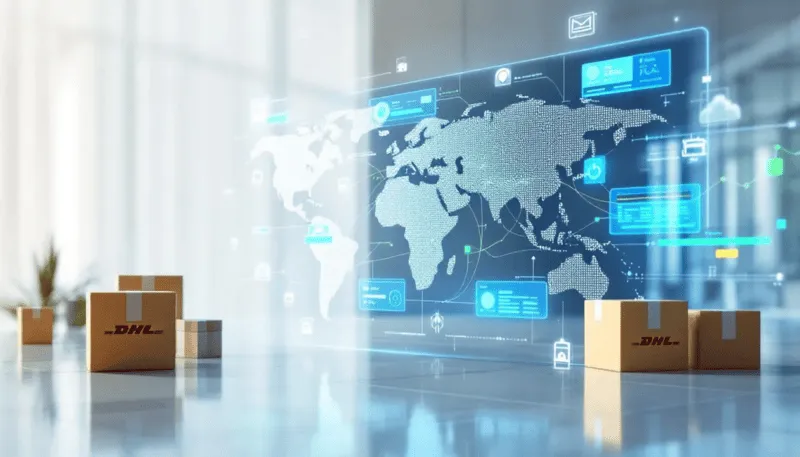
DHL eCommerce is a division of Deutsche Post DHL Group, specializing in domestic and international shipping solutions for ecommerce merchants around the world. With operations in over 220 countries and territories, DHL eCommerce shipments provide extensive global reach, making it a reliable partner for businesses looking to expand their market presence.
The company employs over 45,000 specialists focused on ecommerce logistics, ensuring that your shipments are handled by experienced professionals. DHL eCommerce offers services for ecommerce businesses, marketplaces, and B2B shippers, helping them manage their logistics effectively as a logistics company. This makes it an ideal choice for businesses of all sizes, from small startups to large enterprises.
Sustainability is also a key focus for DHL eCommerce, aligning with green logistics goals to promote environmentally friendly practices. Partnering with DHL eCommerce allows businesses to grow and meet changing demands while contributing to a more sustainable future.
Slash Your Fulfillment Costs by Up to 30%
Cut shipping expenses by 30% and boost profit with Cahoot's AI-optimized fulfillment services and modern tech —no overheads and no humans required!
I'm Interested in Saving Time and MoneyAffordable Shipping Solutions
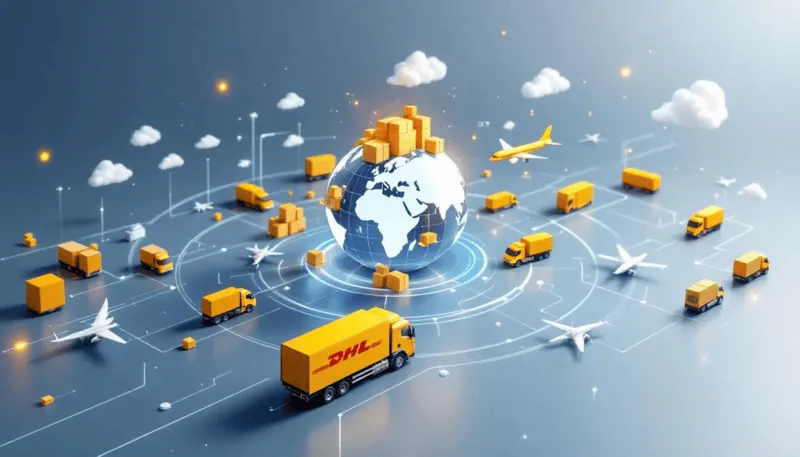
One of the standout features of DHL eCommerce is its affordability, particularly for international parcels. While rates vary based on size, weight, and service level, many ecommerce sellers report that DHL eCommerce often provides lower-cost options compared to USPS for similar cross-border shipments. For example, shipping a lightweight package from the U.S. to the UK can be significantly cheaper through DHL’s Parcel International Direct service compared to USPS Priority Mail International. This price advantage makes DHL eCommerce a compelling choice for businesses seeking cost-effective international delivery without compromising global reach.
DHL eCommerce offers:
- Scalable pricing models that adjust based on order volume, allowing businesses to save on costs as more shipments are processed.
- No minimum volume requirements, making DHL accessible for businesses of varying sizes. But note that ultra-low tier pricing is only available to high-volume shippers (e.g., 1,500+ packages per month).
- A transparent pricing structure that factors in both weight and dimensions, ensuring that you know exactly what you’re paying for.
DHL eCommerce offers competitive pricing for lightweight packages by consolidating and pre-sorting shipments, reducing costs and simplifying the shipping process. With its global network and partnerships with various carriers, DHL eCommerce makes it easy for businesses to expand their reach and deliver packages efficiently.
For example, a Brooklyn-based apparel brand shipping lightweight t-shirts to customers in California saved nearly 35% on each DHL eCommerce shipment compared to USPS Ground Advantage. By using DHL’s scalable pricing and consolidating shipments during peak sale periods, they optimized both cost and delivery accuracy, while avoiding common USPS delays.
Domestic Shipping Services
DHL eCommerce offers a range of domestic shipping services to cater to different needs. One of the popular specific services is the Expedited Max service, which ensures faster deliveries with an average postal time of just 2 – 3 days. The Ground shipping service averages 3 – 8 days for delivery, suitable for less time-sensitive shipments.
Another notable service is the SmartMail Parcel, designed for packages weighing up to 25 lbs. This service allows for a maximum shipment value protection of up to $100, providing peace of mind for valuable items.
DHL eCommerce delivery times can range from 2 to 8 business days for domestic shipments within the United States, making it a versatile option for various shipping needs. These options allow businesses to tailor their shipping strategies to meet customer expectations and ensure timely deliveries, whether expedited or more cost-effective ground shipping is needed.
A popular DTC skincare brand uses Expedited Max for its starter kits under 1 lb—ensuring delivery in 2 – 3 days—while heavier bottles are shipped via Ground to keep shipping costs down. This dual strategy lets them meet shopper expectations on speed while preserving margin.
International Shipping Options
DHL ecommerce services comparison table.
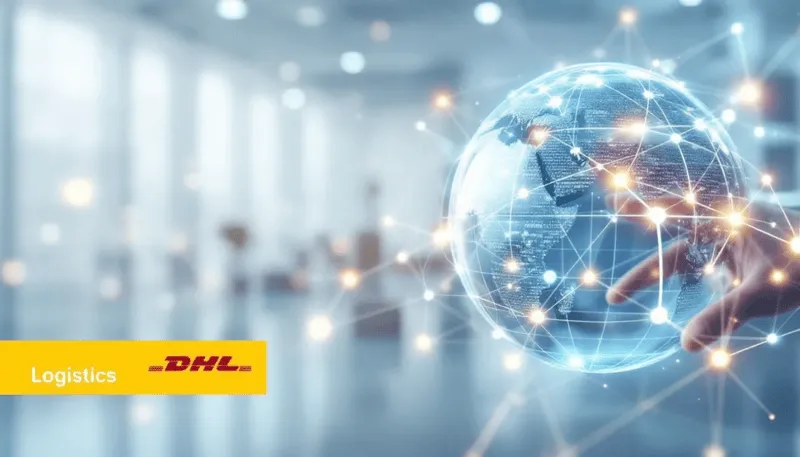
DHL eCommerce provides robust international shipping solutions for businesses aiming to expand globally. The DHL Parcel International Direct service offers:
- Coverage of 37 important ecommerce markets
- Shipping times range from 3 to 10 business days
- Options for duty paid in advance or upon delivery, simplifying the customs process for businesses
The Parcel International Standard service delivers to over 220 countries and territories, with transit times of 4 to 8 business days for Europe and Canada, and 8 to 14 days for the rest of the world. This service is ideal for businesses looking to reach a wider audience without breaking the bank.
For smaller parcels under 4.4 lbs, DHL Packet International offers a cost-effective solution with expected delivery times of 4 to 8 business days. These options enable businesses to select the most suitable service based on shipping needs and destination country, ensuring timely and efficient deliveries worldwide.
However, brands shipping to the UK or Canada should closely monitor customs documentation. One merchant selling tech accessories saw delays of up to 7 days due to missing HS codes on shipping labels, a preventable issue that impacted their ability to confirm delivery dates and caused complaints from international shoppers.
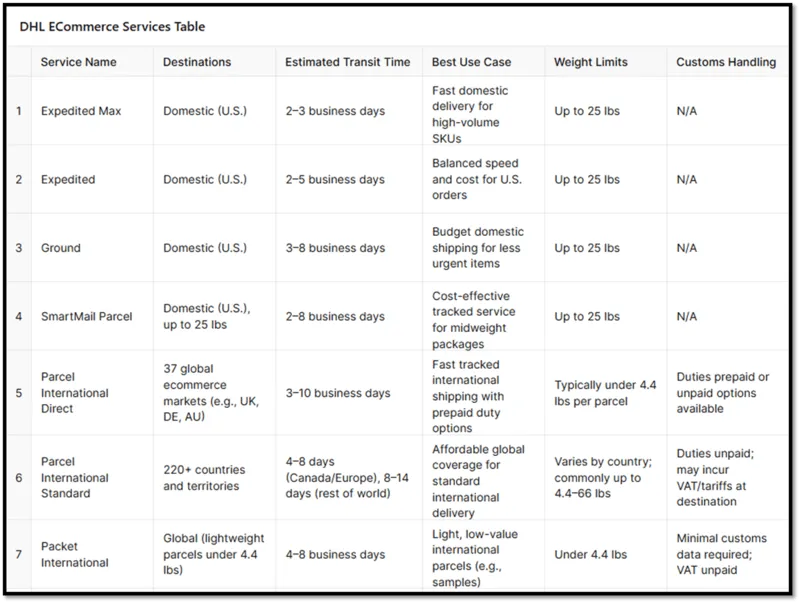
Looking for a New 3PL? Start with this Free RFP Template
Cut weeks off your selection process. Avoid pitfalls. Get the only 3PL RFP checklist built for ecommerce brands, absolutely free.
Get My Free 3PL RFPHybrid Delivery Model
DHL eCommerce employs a hybrid delivery model that combines the strengths of DHL and USPS. In this model, DHL manages upstream logistics, including sorting and processing packages at distribution centers, then transfers them to USPS for last-mile delivery.
This collaboration allows DHL eCommerce to offer economical shipping solutions while ensuring reliable last-mile service through USPS. However, reliance on USPS can lead to service variability across regions, which businesses should keep in mind when planning their shipping strategies.
For example, a Texas-based seller noticed consistent delays in rural New England ZIP codes when DHL hands off to USPS. To mitigate this, they adjusted cut-off times and proactively updated customers with tracking links to manage expectations, a tactic that helped reduce customer service tickets by 18%.
Integration with Ecommerce Platforms
DHL eCommerce seamlessly integrates with all major ecommerce platforms, making it easier for businesses to manage their shipping operations. Key features include:
- Marketplace sellers can connect their accounts for a streamlined shipping experience.
- Simplified parcel delivery and returns.
- Real-time rate retrieval for shipments, improving efficiency and accuracy in pricing.
The 1-call buys feature simplifies the shipping label purchase process, accelerating operations and helping businesses grow. By connecting with platforms like Shopify, Pulse Commerce, and BigCommerce, DHL eCommerce ensures that businesses can manage their orders and shipments with ease.
Real-Time Tracking and Transparency
Transparency is key in the shipping process, and DHL eCommerce excels in providing real-time tracking for shipments. Key features include:
- The Delivery Confirmation Service offers tracking from the sender to the recipient.
- Ensures visibility throughout the shipping journey, providing important details.
- Particularly beneficial for international shipments, where comprehensive tracking is crucial.
DHL eCommerce utilizes advanced technologies and features to enhance shipment tracking.
- Uses GPS and RFID to provide accurate real-time updates on the location of shipments.
- Minimizes human error and enhances automation in tracking parcels.
- Sends proactive notifications to customers regarding any delays or issues during the shipping process, improving their overall experience.
With various tracking solutions, such as API and On-Demand Delivery options, DHL eCommerce caters to diverse business needs, ensuring that both merchants and consumers have access to reliable tracking information.
Operational Pitfalls
While DHL eCommerce offers numerous benefits, there are also operational challenges to be aware of. Many sellers experience tracking delays, particularly during peak shipping seasons, which can lead to customer dissatisfaction. Inadequate communication with logistics partners and the shipper can exacerbate these issues, leading to unforeseen delays in order fulfillment.
Disruptions in supply chains can significantly impact shipping timelines for DHL eCommerce users. Additionally, certain SKUs, particularly those containing hazardous materials, cannot be shipped through DHL eCommerce, making compliance essential. Establishing clear guidelines for unacceptable shipment types is crucial for avoiding pitfalls and ensuring smooth operations.
A seller in the supplements category learned this the hard way when a batch of shipments containing hemp-based products was flagged during transit. Despite full compliance on the origin country side, destination country regulations caused parcel returns and spam-level customer support volume. Lesson learned: Review restricted items by both carrier and country before you ship.
DHL eCommerce’s tracking updates depend on timely USPS tracking event updates, making it important for sellers to monitor these closely. By being proactive and aware of these potential challenges, businesses can gain valuable insights to better navigate the complexities of using DHL eCommerce for their shipping needs.
What They Don’t Tell You: Hidden Costs in DHL’s Latest Rate Hike
If you blinked, you might’ve missed it, but DHL quietly implemented another round of rate increases in July 2025. While smaller than the dramatic spike that took effect in January, these new rates still chip away at the cost advantage many merchants once counted on.
Let’s break it down.
In early 2024, DHL was one of the most affordable shipping options for lightweight parcels, especially in Zones 1 and 2. Fast forward to July 2025, and that edge is eroding. Rates for 1 – 5 oz parcels in Zones 1 & 2 have climbed significantly—often by $0.10 to $0.20 per package. That might sound negligible, but if you’re shipping 10,000 orders per month, that’s a $1,000–$2,000 hit to your bottom line.
What most merchants miss:
- Price creep is consistent across all weight breaks. The increases are small but relentless.
- The biggest relative jumps are at the lightest weights (1 – 3 oz), a core volume segment for ecommerce.
- Zone compression no longer delivers the savings it used to. Previously, you could count on Zones 1 & 2 to be reliably cheap. Now, even “local” deliveries are being repriced to match broader zone costs.
This isn’t just a DHL issue. It’s the downstream effect of new USPS pricing agreements that have reshaped how DHL and other consolidators structure their pricing tiers. In short: the margins are tighter, and their flexibility is fading.
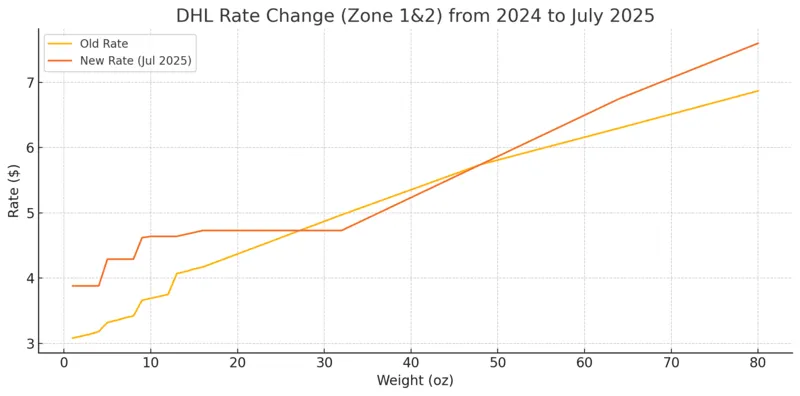
Customs and Trade Considerations
International shipping involves navigating complex customs and trade regulations. DHL eCommerce provides options for customs clearance, letting businesses choose between prepaid or unpaid duties, thus streamlining international shipping processes and avoiding unexpected costs.
Changes in U.S. tariffs do not apply to shipments that have already left their origin, and no current exemptions exist for small businesses regarding tariffs. This situation has created challenges for many businesses who are advised to explore existing trade agreements to obtain tariff impacts and stay informed about changing trade regulations to help their business grow.
Sustainability Initiatives
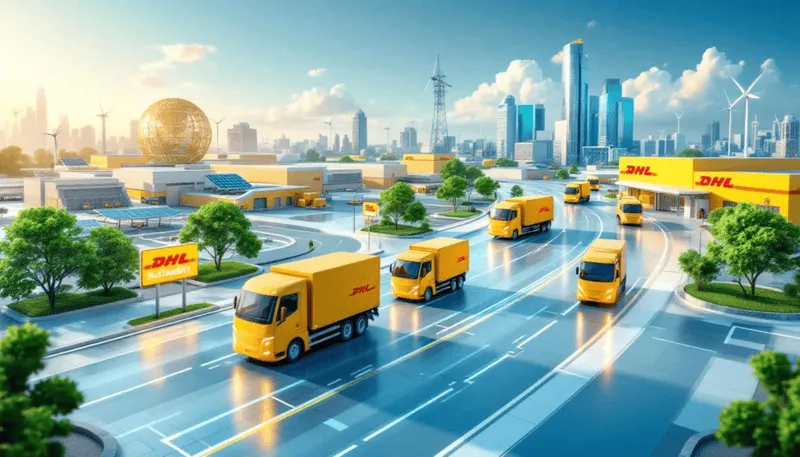
DHL eCommerce is committed to sustainability, as demonstrated by its GoGreen program. The company aims for net-zero emissions by 2050, encouraging employees to engage in climate protection initiatives. This collective effort emphasizes the importance of individual contributions to combat climate change.
The GoGreen program fosters a culture of environmentally friendly behavior within DHL and encourages customers to adopt sustainable practices. Choosing DHL eCommerce allows businesses to align with eco-friendly shipping solutions and contribute to a more sustainable future.
Scale Faster with the World’s First Peer-to-Peer Fulfillment Network
Tap into a nationwide network of high-performance partner warehouses — expand capacity, cut shipping costs, and reach customers 1–2 days faster.
Explore Fulfillment NetworkChecklist for Sellers
DHL can be a powerful ally, but only if you treat it as one part of your fulfillment toolkit. Hybrid delivery, tracking intelligence, and adaptive networks (like Cahoot) are how you thrive in 2025’s logistics landscape.
- Checklist: Before you go all-in on DHL…
- Know your SKU best fit (size/weight limits)
- Be GDPR & customs-ready for cross-border parcels
- Build tracking automation for 48-hour gaps in tracking updates
- Add a fulfillment backup plan for shipments >$800 (de minimis changes may lead to customs delays or rejections)
- Build sustainability/consumer transparency into shipping costs
By following this checklist, sellers can optimize their use of DHL eCommerce and ensure smooth operations.
Summary
In summary, DHL eCommerce offers a comprehensive suite of shipping solutions designed to meet the needs of ecommerce businesses. From affordable domestic and international shipping options to real-time tracking and sustainability initiatives, DHL eCommerce provides the tools necessary for businesses to thrive in the competitive online market.
Many merchants adopt a hybrid strategy, using DHL eCommerce for non-urgent items and maintaining parallel channels with a faster delivery service provider like DHL Express or UPS for high-ticket or time-sensitive orders. This hybrid approach keeps costs in check while meeting the diverse delivery expectations of today’s online shoppers.
By leveraging these services, businesses can enhance their shipping processes, improve customer satisfaction, and contribute to a more sustainable future. Whether you’re a small startup or a large enterprise, DHL eCommerce has the solutions to help you succeed.
Frequently Asked Questions
What is the delivery time for DHL eCommerce domestic shipping services in the United States?
DHL eCommerce domestic shipments typically take 2 to 8 business days, depending on the specific shipping service selected. Options like Expedited Max average 2 – 3 days, while Ground shipping may take up to 8 days. Delivery timelines are influenced by package weight, destination location, and USPS’s last-mile performance.
How long does DHL eCommerce international shipping take for online shoppers sending packages abroad?
DHL eCommerce offers several international shipping services. For example, Parcel International Direct delivers to 37 countries in about 3 to 10 business days, while Parcel International Standard ships to over 220 countries in 4 to 14 days. Shipping times vary based on the destination country, service type, and customs clearance.
What is DHL eCommerce’s hybrid delivery model and how does it affect shipping performance?
The hybrid delivery model used by DHL eCommerce combines DHL’s global logistics infrastructure with USPS for domestic last-mile delivery. This allows ecommerce businesses to access affordable, reliable shipping while benefiting from USPS’s nationwide reach. However, tracking and delivery times may vary depending on USPS efficiency in the final delivery zone.
Does DHL eCommerce offer real-time tracking for shipments and delivery confirmation?
Yes, DHL eCommerce provides real-time shipment tracking through GPS and RFID technologies. Merchants and customers can track packages across every stage of the shipping process, from pickup to final delivery. The Delivery Confirmation service ensures visibility and enhances trust, especially for international ecommerce shipments.
What sustainability programs does DHL eCommerce offer for eco-conscious ecommerce businesses?
DHL eCommerce is committed to sustainable logistics through its GoGreen program, which aims for net-zero carbon emissions by 2050. The company invests in alternative fuels, electric vehicles, and climate protection initiatives, helping ecommerce merchants align their shipping operations with environmentally responsible practices.

Turn Returns Into New Revenue

3PL vs 4PL: What’s the Difference and Which Is Right for Your Brand?
In this article
 11 minutes
11 minutes
- Why This Question Matters More Than Ever
- Understanding First-Party Logistics
- What Is a 3PL?
- What Is a 4PL?
- Core Competencies: What Should You Keep In-House?
- The Key Differences Between 3PL and 4PL
- Supply Chain Agility: Why It Matters
- When to Use a 3PL
- When to Consider a 4PL
- The Overlooked Tradeoffs
- Transitioning to a New Logistics Model
- Real-World Example: Growing Out of a 3PL
- What About 5PL?
- Choosing the Right Model for You
- Frequently Asked Questions
Logistics is the backbone of any successful business, ensuring that products move efficiently from origin to customer. At its core, logistics management involves coordinating transportation, inventory management, and warehouse operations to keep the supply chain running smoothly. As businesses grow and supply chains become more complex, managing these logistics operations in-house can become overwhelming. That’s where third-party logistics (3PL) and fourth-party logistics (4PL) providers come in. 3PLs handle specific logistics functions, like shipping, storage, and fulfillment, while 4PLs oversee the entire supply chain network, orchestrating multiple logistics partners and optimizing every link in the chain. Understanding the differences between 3PL and 4PL is essential for making informed decisions about your logistics strategy, ensuring you choose the right partner to boost supply chain performance and support your business goals.
Why This Question Matters More Than Ever
After many years working alongside ecommerce operators, from Shopify startups to enterprise Amazon sellers, I’ve noticed a pattern: brands rarely know what kind of logistics partner they’ve signed up for. Is it a 3PL or a 4PL? And does that even matter?
Absolutely. In 2025, as ecommerce supply chains get more fragmented and customer expectations rise, choosing the right model, third-party logistics (3PL) vs. fourth-party logistics (4PL), can be the difference between scalable growth and operational chaos.
This guide explains how each model works, who it’s best for, and what I’ve learned watching merchants succeed (and fail) with both.
Slash Your Fulfillment Costs by Up to 30%
Cut shipping expenses by 30% and boost profit with Cahoot's AI-optimized fulfillment services and modern tech —no overheads and no humans required!
I'm Interested in Saving Time and MoneyUnderstanding First-Party Logistics
First-party logistics (1PL) is when a business takes full responsibility for its own logistics operations. This means managing everything from transportation and inventory management to warehouse operations without relying on external logistics providers. With 1PL, you have complete control over your supply chain, allowing for maximum flexibility and direct oversight. However, as supply chains become more complex and customer expectations rise, handling all logistics services internally can strain resources and require significant expertise. That’s why many businesses turn to third-party logistics (3PL) and fourth-party logistics (4PL) providers for outsourced logistics services. By partnering with a specialized logistics company, you can focus on your core competencies, like product development and marketing, while experts handle the logistics operations that keep your business moving.
What Is a 3PL?
A third-party logistics provider (3PL) is a logistics company that handles specific logistics services for your brand, usually order fulfillment, warehouse management, inventory storage, and arranging transportation. Most 3PLs operate their own warehouses and utilize specialized infrastructure to efficiently manage logistics functions. They are responsible for the physical movement of goods within the supply chain. You (the merchant) still manage the broader supply chain operations, but the logistics provider takes care of executing the day-to-day logistics tasks.
Common 3PL Functions:
- Pick, pack, and ship orders
- Store and manage inventory
- Integrate with your ecommerce platforms
- Provide basic shipping label software
- Handle returns and restocking
Most 3PLs operate their own warehouses (or lease space) and use their own logistics processes and systems. You interact directly with them, often one location at a time (or more often, they only have a single location from which they store and ship all inventory).
What Is a 4PL?
A fourth-party logistics provider is a higher-level logistics partner that manages the entire supply chain network for you. Rather than owning physical warehouses, 4PLs act as supply chain orchestrators, managing multiple 3PLs, freight forwarders, software tools, and carriers to optimize performance. A fourth-party logistics provider integrates multiple logistics services to deliver comprehensive supply chain management. They manage logistics by overseeing logistics managers and coordinating advanced technology platforms. 4PLs oversee a wide range of supply chain activities, ensuring every aspect of the supply chain is optimized. In addition, they coordinate with other supply chain partners to achieve seamless collaboration and efficiency.
You don’t talk to the warehouse. You talk to your 4PL, who owns the relationship with the other service providers and handles strategic planning, problem solving, performance management, and leverages digital platforms for real-time information exchange and effective communication.
Common 4PL Responsibilities:
- Select and manage multiple 3PLs (or peer-to-peer fulfillment services providers)
- Coordinate freight, final-mile delivery, and returns
- Optimize inventory distribution across warehouses
- Deliver a single point of contact and centralized platform
- Provide analytics, performance metrics, exception management, and cost optimization
Core Competencies: What Should You Keep In-House?
When evaluating whether to outsource logistics operations to a 3PL or 4PL provider, it’s crucial to identify your business’s core competencies, the unique strengths and expertise that set you apart in the market. By keeping these core activities in-house and outsourcing non-core logistics functions, you can streamline your supply chain, boost operational efficiency, and focus resources where they matter most. Outsourcing logistics operations to the right logistics partner allows you to tap into specialized knowledge, advanced technology, and established networks, all while maintaining control over your strategic direction. However, it’s important to carefully assess potential partners to ensure their values and capabilities align with your business objectives, so you can optimize supply chain performance without compromising on quality or service.
Looking for a New 3PL? Start with this Free RFP Template
Cut weeks off your selection process. Avoid pitfalls. Get the only 3PL RFP checklist built for ecommerce brands, absolutely free.
Get My Free 3PL RFPThe Key Differences Between 3PL and 4PL
|
Dimension
|
3PL (Third-Party Logistics)
|
4PL (Fourth-Party Logistics)
|
|---|---|---|
|
Focus
|
Operational execution
|
Strategic supply chain management
|
|
Assets
|
Own or lease physical infrastructure
|
Often asset-light, tech-led
|
|
Point of Contact
|
Merchant works directly with 3PL
|
4PL manages communication with all partners
|
|
Technology
|
Basic integration, label tools
|
Unified dashboard + optimization
|
|
Scalability
|
Limited to 3PL’s network and infrastructure
|
Designed to scale across regions and continents
|
|
Control & Flexibility
|
Higher brand-side control
|
Less control, but more orchestration
|
|
Best for
|
Brands shipping from 1 – 2 warehouses
|
Brands ready to scale nationally or globally
|
4PL providers offer a broader range of logistics solutions compared to 3PLs, managing the entire fulfillment process from start to finish. Their enterprise-level capabilities make them ideal for large businesses with complex supply chain needs. Both 3PLs and 4PLs provide unique services tailored to different business requirements.
Supply Chain Agility: Why It Matters
In today’s rapidly changing logistics landscape, supply chain agility is more important than ever. The ability to quickly adapt to shifts in demand, market trends, or disruptions can make or break a business. 3PL and 4PL providers play a key role in enhancing supply chain agility by offering flexible, scalable logistics solutions and leveraging advanced technologies to manage complex supply chains. By partnering with logistics experts who understand the intricacies of the entire supply chain, businesses can respond faster to customer needs, reduce costs, and improve overall supply chain performance. In a world where speed and adaptability are critical, having an agile logistics partner can give your brand a significant competitive edge.
When to Use a 3PL
3PLs are a good fit when:
- You’re in early to mid-growth stages
- You want hands-on control of warehouse operations
- You don’t need to split inventory across regions (yet)
- You’re shipping under 1,000 orders/month
- Your customer base is geographically concentrated
I’ve seen brands stay with one strong 3PL for years with solid results, until they hit growth friction: slow shipping to the coasts, rising shipping costs, inventory imbalances, and no clear path to multi-node fulfillment.
That’s usually the signal that a 4PL might make sense.
When to Consider a 4PL
4PLs are best suited for brands that:
- Need to scale fulfillment across multiple regions (or countries) and channels
- Want a single point of contact for a complex supply chain
- Are juggling multiple logistics providers and supply chain partners already, and need coordination
- Want to reduce supply chain complexity and focus on growth
- Are optimizing for an efficient supply chain and logistics performance, not just cost
4PLs often build long-term partnerships with clients, ensuring ongoing collaboration and strategic alignment. In other words, a 4PL isn’t just a bigger 3PL; it’s a strategic partner that sits above the supply chain and helps run it by coordinating various supply chain partners for optimal results.
The Overlooked Tradeoffs
Control vs. Leverage
Working with a 3PL often gives you more control; you can call the warehouse, negotiate rates, and see the floor. But you’re also on the hook when something breaks.
A 4PL gives you leverage. You offload responsibility, but you also have to trust their playbook.
Cost vs. Efficiency
A single-location 3PL might look cheaper on paper. But when you factor in:
- Long-zone shipping costs
- Lost sales due to slow delivery
- Manual coordination across tools
… the cost advantage disappears fast.
And, 4PLs can often deliver lower total landed costs, even if certain fees are higher, because the total operational cost is lower by design.
Physical Assets vs. Digital Coordination
3PLs operate trucks, racks, boxes, and forklifts. 4PLs operate dashboards, rules engines, and playbooks. If your brand needs to move fast, digital flexibility often trumps physical ownership.
Transitioning to a New Logistics Model
Switching to a new logistics model, such as moving from a 3PL to a 4PL provider, can be a game-changer for your business, but it requires thoughtful planning and execution. Start by evaluating your current logistics operations to pinpoint pain points and opportunities for improvement. Consider how a new logistics partner or model could help you achieve your strategic goals, whether that’s expanding into new markets, improving operational efficiency, or optimizing supply chain performance. Develop a detailed transition plan that addresses potential risks and outlines steps to minimize disruptions during the changeover. By carefully selecting a logistics partner that aligns with your business values and objectives, and by managing the transition process proactively, you can unlock new levels of efficiency and set your supply chain up for long-term success.
Real-World Example: Growing Out of a 3PL
One of the brands I work with started with a single-location 3PL in New Jersey. At first, it worked great. Shipping was fast to the Northeast, costs were low, and customer experience was solid.
But as their TikTok growth exploded, they suddenly had customers in California, Texas, and Florida, and 2-3 day delivery was now 4-5. Shipping costs skyrocketed. Their 3PL couldn’t scale to additional nodes, so they started DIY-ing with another warehouse in Utah.
Now they were a brand trying to manage two 3PLs, two tech stacks, and duplicate inventory forecasting.
Eventually, they switched to Cahoot (a 4PL). We redistributed inventory to match order heatmaps, brought multi-node fulfillment under a single unified SLA, and gave them a single point of contact to run the whole network. Their logistics model matured, and so did their CX scores.
Scale Faster with the World’s First Peer-to-Peer Fulfillment Network
Tap into a nationwide network of high-performance partner warehouses — expand capacity, cut shipping costs, and reach customers 1–2 days faster.
Explore Fulfillment NetworkWhat About 5PL?
Yes, it exists. A fifth-party logistics provider (5PL) manages entire fulfillment ecosystems, usually using AI-powered platforms and predictive demand tools. Think of 5PLs as digital-only logistics architects for enterprise brands shipping globally.
Each party logistics provider, from 1PL to 5PL, represents a different level of supply chain management, with higher numbers indicating more comprehensive, strategic oversight and integration across the logistics process.
But most ecommerce merchants won’t hit that level unless they’re operating multiple DTC brands or $100M+ in GMV.
Choosing the Right Model for You
There’s no universally “better” choice between 3PL vs 4PL; it depends on your stage, structure, and strategic goals. But here’s the rule of thumb I share with every merchant:
If you’re spending more time coordinating your fulfillment than growing your business, it’s time to move up the stack.
Let logistics be handled by experts. Just make sure they’re aligned with your brand goals, not just your carton counts.
Frequently Asked Questions
What is the main difference between 3PL and 4PL?
A 3PL handles physical logistics tasks like shipping and warehousing. A 4PL manages the entire logistics ecosystem, coordinating multiple 3PLs, carriers, and tech tools, so the merchant doesn’t have to.
Is a 4PL better than a 3PL?
Not always. A 3PL gives you more direct control, while a 4PL delivers orchestration and scale. 4PLs are better for multi-node fulfillment, complex supply chains, or international operations.
Does a 4PL own warehouses?
Usually not. Most 4PLs are asset-light and rely on partnerships with multiple 3PLs or merchant-owned and operated facilities. Their value comes from coordination, optimization, and supply chain performance management.
Is Cahoot a 4PL?
Yes. Cahoot operates as a tech-driven 4PL with a best-in-class peer-to-peer 3PL network under the hood. Brands get nationwide coverage, fast shipping, and a single platform, without managing 10 warehouses themselves.
What are the signs you’ve outgrown your 3PL?
If your shipping zones are too long, your warehouse can’t scale with you, or you’re manually managing multiple vendors, you may need a 4PL to streamline and optimize your operations.

Turn Returns Into New Revenue

Why DDP Shipping Is The Smarter Choice For International Ecommerce
In this article
 13 minutes
13 minutes
- What Is DDP Shipping?
- Understanding DDP Incoterms and Agreements
- DDP vs. DDU: Why It Matters
- How Customs Delays Destroy the Experience
- The True Cost of International Shipping
- DDP Agreement Responsibilities and Obligations
- When to Use DDP Shipping
- Disadvantages of DDP Agreements and Potential Risks
- How to Set Up DDP Shipping
- Payment Terms and DDP Shipping
- How to Communicate International Shipping Terms Clearly
- Common Pitfalls in DDP Shipping
- Rejecting a DDP Shipment and Potential Issues
- A Quick Note on DDP and Customer Perception
- Frequently Asked Questions
International shipping is where ecommerce brands grow, or implode. Expanding into the global market exposes ecommerce brands to both new opportunities and complex shipping challenges. I’ve worked with merchants who doubled their market size going global… and others who bled money, inventory, and trust because they underestimated how complex it can get. The culprit? Usually, customs clearance delays, hidden fees, or a poor choice between Delivered Duty Paid (DDP) vs. Delivered Duty Unpaid (DDU).
This guide breaks down what DDP shipping is, how it affects your customers, and why it’s increasingly the go-to model for scaling international ecommerce.
What Is DDP Shipping?
Delivered Duty Paid (DDP) means the seller assumes full responsibility for all shipping costs, customs duties, taxes (like VAT), and customs clearance fees until the package is delivered to the customer’s door. Under DDP shipping terms, the seller assumes responsibility for all costs and risks until delivery. It’s the opposite of Delivered Duty Unpaid (DDU), where the customer pays import costs on arrival.
In DDP, you own the delivery experience end-to-end. That means:
- Fewer surprise fees
- Faster customs clearance
- Fewer packages are held at the destination port
- Happier customers who aren’t slapped with unexpected customs duties
- The seller takes responsibility for customs formalities, including paying customs fees and import clearance
Seller’s responsibilities also include paying export duties and import and export duties. DDP is a delivery agreement defined by the International Chamber (ICC) as part of Incoterms, and these shipping terms are typically outlined in a sales contract. A DDP shipping agreement details the seller’s obligations, and DDP shipping offers advantages such as transparency and convenience. Buyers may be eligible for a VAT refund depending on the destination country’s regulations.
Slash Your Fulfillment Costs by Up to 30%
Cut shipping expenses by 30% and boost profit with Cahoot's AI-optimized fulfillment services and modern tech —no overheads and no humans required!
I'm Interested in Saving Time and MoneyUnderstanding DDP Incoterms and Agreements
Delivered Duty Paid (DDP) is more than just a shipping method; it’s a comprehensive shipping agreement defined by international commercial terms (Incoterms) that places the bulk of responsibility on the seller. Under DDP, the seller manages the entire shipping process, covering transportation costs, export and import duties, and all customs fees until the goods reach the buyer’s door. This approach streamlines international shipping by consolidating all the moving parts under one party, making it easier for buyers to receive their products without worrying about additional work, costs, or customs headaches.
For ecommerce brands, understanding DDP Incoterms and agreements is essential. A well-structured DDP agreement clarifies who pays for what, reducing the risk of unexpected fees and ensuring a smoother delivery experience. However, sellers must pay close attention to the fine print; overlooking certain responsibilities or failing to account for all the costs involved can lead to profit loss or delivery delays. By mastering the details of Delivered Duty Paid (DDP) agreements, sellers can offer a more predictable, hassle-free international shipping experience that builds trust and loyalty with global customers.
DDP vs. DDU: Why It Matters
Here’s a quick breakdown:
|
Feature
|
DDP Shipping
|
DDU Shipping
|
|---|---|---|
|
Import Duties Paid By
|
Seller
|
Buyer
|
|
Customs Clearance
|
Handled by Seller
|
Delayed until Buyer Pays
|
|
Shipping Costs
|
More predictable
|
May appear cheaper upfront
|
|
Customer Experience
|
Seamless, low friction
|
Often confusing, leading to returns
|
|
Delivery Delays
|
Rare
|
Common at customs
|
|
Global Trust
|
High
|
Lower, especially first-time buyers
|
DDP shipments can vary significantly depending on the destination country, local customs requirements, and the chosen shipping method, whether sea freight or air freight. These factors influence shipment costs and the overall process, including the seller’s responsibility for the shipment until its final delivery.
In 2025, most top-performing international brands I work with are migrating to DDP shipping. Why? Because the old DDU model is killing retention and crushing brand reputation abroad.
How Customs Delays Destroy the Experience
Let’s say you sell skincare to a customer in Germany using DDU. The package arrives, gets flagged, and customs emails the customer saying, “Pay €23 in import tax to release your package.”
Best case: they pay and wait another 3-5 days. Worst case: they don’t understand the email, don’t trust it, or abandon the purchase. You eat the cost of a failed delivery, a refund, and possibly a chargeback.
Delays can also occur during import clearance if other government agencies, such as customs authorities or port officials, are involved, or if customs fees are not paid promptly. Failing to pay customs fees or provide proper documentation can further slow down the process and increase the risk of delivery failure.
That’s not just bad CX. That’s revenue erosion caused by incomplete delivery.
I’ve seen merchants lose 20-30% of their international orders this way. And it’s preventable.
The True Cost of International Shipping
You might think DDP is more expensive. But when you account for:
- Shipping fees
- Reships, returns, and customer service time
- Not to mention lost future purchases due to churn…
…DDP is often cheaper in the long run.
Plus, most shipping insurance, freight forwarders, and fulfillment warehouses operate more smoothly when they know customs won’t be a bottleneck.
DDP shipping also helps streamline the supply chain by minimizing delays after customs clearance, ensuring delivery drivers can complete the final leg of the journey efficiently.
Looking for a New 3PL? Start with this Free RFP Template
Cut weeks off your selection process. Avoid pitfalls. Get the only 3PL RFP checklist built for ecommerce brands, absolutely free.
Get My Free 3PL RFPDDP Agreement Responsibilities and Obligations
A DDP agreement clearly outlines the division of responsibilities between the seller and the buyer, making it important for both parties to understand their roles. Under DDP, the seller takes on the lion’s share of the work and costs. This includes handling customs clearance, covering all transportation costs to the destination country, and paying any shipping expenses, import duties, and customs clearance fees. The seller is also responsible for securing shipping insurance, preparing accurate customs documentation, and ensuring the shipment arrives safely and on time.
Once the goods reach the destination country, the buyer’s responsibilities are minimal, typically limited to unloading fees and any additional costs that arise after the shipment arrives. This clear division of labor helps prevent disputes and ensures a smooth transaction. For sellers, it’s essential to stay on top of all documentation and compliance requirements, while buyers should be prepared to handle the final steps of receiving their goods. By understanding and fulfilling their obligations under a DDP agreement, both parties can avoid costly misunderstandings and keep the shipping process running smoothly.
When to Use DDP Shipping
DDP isn’t always necessary. But for the following cases, I strongly recommend it:
- First-time customers in a new market
- High-value items or products with complex import duties
- Markets with strict customs (e.g., Brazil, UK, Canada)
- Categories like supplements, skincare, and fashion that are frequently flagged
- Any time you’re running promotions or launching internationally and can’t afford negative CX
Disadvantages of DDP Agreements and Potential Risks
While DDP agreements offer significant advantages, they aren’t without drawbacks. One of the main risks is that sellers, in an effort to protect their margins, may choose the most expensive shipping options (for reliability) or pass on some or all of the additional costs to buyers through higher prices. This can make DDP shipments less competitive, especially in markets where buyers are sensitive to shipping fees (though it works quite successfully for some of our clients). Additionally, the complexity of DDP agreements means that unexpected fees can still arise, such as local taxes or handling charges not covered in the original agreement, potentially eroding profit margins and causing frustration for both parties.
Another potential pitfall is the loss of control for buyers. With the seller managing the entire shipping process, buyers have little say in the choice of carrier or shipping method, which can impact delivery speed and reliability. To minimize these risks, sellers should carefully manage their costs, stay informed about changing regulations, and consider alternative shipping options when appropriate. Buyers, meanwhile, should thoroughly review the terms of any DDP agreement to ensure they understand all potential additional costs and avoid surprises down the line.
???Policy pages???
How to Set Up DDP Shipping
1. Work With a Freight Forwarder or Carrier That Supports DDP
Not every carrier offers true DDP. Some freight forwarders also handle import clearance as part of their DDP service. Look for freight forwarders or services like DHL Express, UPS Worldwide DDP, or even 3PL/4PLs (like Cahoot) that integrate DDP into the shipping process.
2. Use Shipping Software That Calculates Duties
Modern platforms can calculate customs fees, VAT, and handling shipping costs by country. Automate this and show the customer all-in pricing at checkout. Transparency builds trust.
3. Prepay Duties and Taxes
Build duties into the product price or into the shipping fee at checkout, so the seller will pay import duties on behalf of the buyer. This avoids surprise fees for the buyer and ensures the shipment arrives without hiccups.
4. Handle Customs Documentation Correctly
Incomplete forms = customs delays. Handling customs documentation correctly is a key part of managing customs formalities for DDP shipments. Every DDP shipment should include:
- Commercial invoice with HS codes
- Accurate declared value
- Reasonable description of goods
- Manufacturer and country of origin
- Proper contact info for seller
Get this wrong and your DDP label won’t save you.
5. Consider Local Warehousing or Cross-Border Fulfillment
Want to scale faster? Set up inbound shipments into a local warehouse or use a fulfillment network that can deliver duty paid from within-region inventory.
Payment Terms and DDP Shipping
Payment terms are a critical component of any DDP shipping arrangement. Typically, sellers require payment before goods are shipped, but the specifics can vary widely. Some sellers may ask for full payment once the goods are loaded onto the vessel, while others might only require final payment after the shipment clears customs in the destination country. For buyers, it’s essential to review these payment terms carefully to ensure they’re not exposed to unexpected fees or liabilities.
Sellers can use flexible payment terms as a competitive advantage, offering options that build trust and attract more international customers. However, both parties should agree on clear, transparent payment terms that outline when payments are due and what costs are covered. This helps prevent disputes and ensures that neither side is caught off guard by additional charges. By aligning payment terms with the realities of DDP shipping, ecommerce brands can create a smoother, more predictable experience for their global customers.
How to Communicate International Shipping Terms Clearly
The most underrated driver of global customer satisfaction? Clear communication. Even the best DDP setup can fall apart if buyers don’t understand what to expect.
If you’re selling internationally, you need to spell out your shipping terms like you’re talking to someone who’s never ordered outside their home country. This means:
- Create a dedicated International Shipping Policy page
Include the list of countries you ship to, shipping timeframes, carriers used, and what “Delivered Duty Paid” actually means. Make it easy to find from your main nav or help center.
- Use dynamic checkout messaging
Display location-based notices that explain what’s included in shipping costs. For example: “All import fees are included. You won’t owe anything on delivery.” Platforms like Shopify, BigCommerce, and WooCommerce make this easy.
- Add callouts on product pages (if needed)
If a product isn’t eligible for international shipping or DDP, say so directly on the product page. This prevents confusion and reduces failed checkouts.
- Clarify customs, duties, and VAT in FAQs
Use your help center or FAQ page to answer “Will I have to pay anything extra?” in plain English. Anticipate friction before it happens.
Global buyers often abandon purchases not because the price is too high, but because the rules are too unclear. Good communication turns hesitation into confidence.
Common Pitfalls in DDP Shipping
Assuming All DDP Services Are Equal
Some carriers market “DDP” but still invoice the recipient later for certain unloading fees or local taxes. Different carriers may have different DDP shipping offers, so it’s important to compare what each one includes. Always confirm what’s included.
Not Keeping Track of Changes in Import Law
Every destination country updates its import/export rules regularly. In 2025, countries like India and the EU are tightening enforcement on value-added tax (VAT). If your DDP process hasn’t evolved, you’ll get stuck.
Not Localizing Product Descriptions
If your customs form says “natural remedy blend,” and it’s really a liquid supplement, you’ll trigger a red flag. Vague language = delays. Customs authorities aren’t dumb.
Scale Faster with the World’s First Peer-to-Peer Fulfillment Network
Tap into a nationwide network of high-performance partner warehouses — expand capacity, cut shipping costs, and reach customers 1–2 days faster.
Explore Fulfillment NetworkRejecting a DDP Shipment and Potential Issues
Rejecting a DDP shipment isn’t as simple as turning away a package at the door; it can trigger a cascade of complications and costs. Buyers should always review their purchase contracts to understand their rights and responsibilities in the event of a rejection. If a DDP shipment is refused, the seller may be on the hook for return shipping fees, customs duties, and any additional costs incurred during the process. These expenses can add up quickly, especially if the goods need to be shipped back across borders.
For sellers, the key to minimizing rejection risks is to provide accurate documentation, ensure products meet all destination country standards, and communicate clearly with buyers throughout the shipping process. Buyers, meanwhile, should be aware that rejecting a shipment could mean forfeiting deposits or incurring extra fees. Open communication and prompt resolution of any issues are essential to avoid unnecessary costs and protect both parties’ reputations. By understanding the potential pitfalls of rejecting a DDP shipment, ecommerce brands and their customers can better navigate the complexities of international trade.
A Quick Note on DDP and Customer Perception
I’ve had clients say: “If we offer DDP, won’t customers complain about higher shipping costs?”
Sure, if it’s not explained well. But when you position it as “No surprise fees. Everything included.”, conversion improves.
Customers want predictable costs. If you surprise them, it had better be with an upgrade, not a bill.
Frequently Asked Questions
What is Delivered Duty Paid (DDP) shipping?
DDP shipping (delivery duty paid) means the seller covers all shipping, customs, and import duties until the package is delivered. It removes financial and bureaucratic responsibility from the customer.
How is DDP different from DDU?
With DDP, the seller pays all import fees up front. With DDU (Delivered Duty Unpaid), the customer is expected to pay duties upon arrival, which often leads to confusion, delays, or failed deliveries.
Does DDP shipping increase shipping costs?
While base rates can be higher, DDP reduces hidden costs like returns, abandoned orders, and customer service overhead. For most ecommerce brands, it increases profit and retention over time.
Can I use DDP for all countries?
Not always. Some destinations don’t support true DDP or may have limited courier options. Check with your carrier or freight forwarder to see what’s available in each destination country.
How can I offer DDP without hurting my margins?
Factor duties and shipping expenses into pricing, or split costs with customers at checkout transparently. You can also segment by region, offering DDP only where the risk of customs delays is highest.

Turn Returns Into New Revenue

Why and How to Use Discreet Packaging for Shipping
You’d be surprised how many awkward customer support tickets start with a simple failure to ship discreetly. Over the past eight years, working with ecommerce merchants across every category you can imagine, health, wellness, fashion, adult products, I’ve seen one constant: customer privacy is a make-or-break issue. The right product packaging plays a crucial role in maintaining privacy and preventing potential embarrassment for customers, especially when shipping sensitive or personal items.
Discreet packaging isn’t just about avoiding embarrassment. Potential embarrassment is a key reason customers value discreet packaging, as it helps protect their confidentiality. It’s about trust, brand perception, and meeting rising consumer expectations around security, personalization, and sensitivity. Discreet packaging also helps maintain privacy for sensitive purchases, reducing the risk of theft and ensuring customer security. Whether you’re shipping prescription medications, high-value items, or personal care items, how you package and label the order can affect repeat business, returns, and even your ability to advertise.
Let’s break down what discreet shipping really means today, why it’s growing in importance, and how you can implement it without slowing down your fulfillment ops.
Slash Your Fulfillment Costs by Up to 30%
Cut shipping expenses by 30% and boost profit with Cahoot's AI-optimized fulfillment services and modern tech —no overheads and no humans required!
I'm Interested in Saving Time and MoneyWhat Is Discreet Packaging, Really?
At its core, discreet packaging refers to plain, unmarked packaging (often using plain boxes) that hides the nature of the product inside. But it’s more than just using a plain box; it’s a combination of:
- Neutral packaging materials: No logos, product names, or category clues
- Generic return addresses: Often using something like “Shipping Department” or a fulfillment center location
- No branded tape or inserts: No flyers, product visuals, or “thank you” cards that hint at contents
- Label anonymization: Avoiding descriptive product names in the shipping label or tracking info
- Neutral labeling: Using vague, unbranded labels and generic descriptions to conceal package contents
- Opaque outer containers: Especially important for sensitive items like incontinence products, adult toys, or medications
When done right, discreet packaging ensures that no one—neither the mail carrier, nosy neighbors, nor accidental family members—can tell what was purchased just by looking at the box. The package contents remain fully concealed for privacy and confidentiality.
Who Needs Discreet Packaging?
Short answer: more brands than you think. Many businesses and companies, especially ecommerce businesses, benefit from discreet packaging to protect customer privacy, build trust, and enhance the overall experience. Here’s where we see discreet packaging being not just nice-to-have, but critical:
Health & Wellness
This includes everything from prescription medications, medical devices, medical supplies, and health products to incontinence products and CBD oils. Patients don’t want the contents advertised on their porch. HIPAA compliance may not require discreet packaging directly, but the spirit of it absolutely supports it.
Adult Products
The most obvious use case. No one wants a box labeled “PleasurePro” showing up at their front door. Successful adult ecommerce brands build their entire customer experience around discretion, and their discreet shipping options are often highlighted on product pages and ads.
Personal Care
Even things like hair regrowth serums, skincare for acne, and certain sensitive products trigger embarrassment, making discreet purchasing and packaging especially important to customers. Consumers appreciate when a brand respects their desire to keep those purchases private.
Jewelry and Luxury
Beyond privacy, discreet packaging also protects against theft. Using plain packaging for high-value items such as jewelry, luxury goods, and electronics avoids drawing attention during transit, especially in high-theft metro areas.
Gift Purchases
Many customers order gifts and don’t want the recipient to see what’s inside early, as preserving the element of surprise is essential for a memorable gift-giving experience. Using discreet packaging materials can help reduce spoiled surprises and maintain control over the unboxing experience.
Why Discreet Shipping Is a Growth Lever
This isn’t just about reducing awkward moments. With the growing popularity of discreet shipping, driven by increased privacy concerns and the rise of unboxing trends, understanding why it’s growing in importance is crucial. When I work with merchants who implement discreet packaging correctly, they consistently report:
- Higher customer satisfaction: Customers feel respected. That’s a powerful loyalty driver.
- Fewer returns and chargebacks: People are less likely to return or dispute sensitive items when they arrive in a way that protects their privacy.
- Increased repeat business: Especially in health and adult categories. Trust builds long-term customer value.
- Better email deliverability: Discreet shipping claims in marketing copy can boost open rates, just don’t overpromise what you can’t operationalize.
- Stronger brand reputation: Reviews often cite “arrived discreetly” as a reason for a 5-star rating.
- Building trust with customers: Discreet packaging and shipping practices help establish a trustworthy relationship by maintaining confidentiality, especially for sensitive or personal items.
So to sum it up: a positive fulfillment experience, including discreet packaging, not only enhances customer satisfaction but also builds loyalty and confidence in your brand.
Looking for a New 3PL? Start with this Free RFP Template
Cut weeks off your selection process. Avoid pitfalls. Get the only 3PL RFP checklist built for ecommerce brands, absolutely free.
Get My Free 3PL RFPCommon Mistakes to Avoid
You’d be surprised how often brands check all the discreet packaging boxes, and then blow it on something small. Here are a few real mistakes I’ve seen:
- Branded packing slips: Even if the box is plain, a label that says “MemorySupplementsNow.com” tells the whole story. Always use the company’s legal name, not a branded name, on return addresses and customs forms to maintain discretion.
- External return addresses with brand names: Even if the box is plain, a label that says “MemorySupplementsNow.com” tells the whole story. Always use the company’s legal name, not a branded name, on return addresses and customs forms to maintain discretion.
- Inconsistent warehouse practices: If your 3PL or fulfillment team isn’t aligned on your packaging SOPs, you’ll have one box go out perfectly and the next with tape screaming your brand name.
- Carrier service level confusion: Some carriers auto-require an adult signature based on package type or origin, without notifying the shipper. That can backfire if a family member answers the door.
At Cahoot, we’ve had to help multiple brands unwind issues like this and re-train fulfillment partners. Privacy is only as strong as the weakest label. Consistency in shipping and packaging practices is essential to avoid privacy breaches and protect customer trust.
How to Implement Discreet Packaging the Right Way
Here’s the blueprint I’ve seen work across dozens of high-growth ecommerce brands that opt for discreet packaging solutions to protect customer privacy and reduce theft:
- Map your customer journey and identify every touchpoint where packaging is seen or handled.
- Audit your current packaging for branding, privacy, and sustainability.
- Choose packaging materials and configure shipping labels to ship products discreetly, use plain, unbranded boxes or envelopes, and avoid revealing information on the exterior to maintain confidentiality.
- Leverage ecommerce platforms to automate and support discreet packaging processes, ensuring accuracy and privacy throughout order fulfillment and delivery.
- Test your packaging with real customers and gather feedback for continuous improvement.
Knowing why discreet packaging matters is only half the equation; the real magic is in how you operationalize it. Here’s how to turn that intent into a repeatable, scalable practice that protects your customers and your brand.
1. Define Your Level of Discretion
There’s a spectrum. Some brands need total discretion, even generic outer box codes. Others just need to avoid overt branding. Document your expectations clearly and audit them regularly.
2. Choose the Right Packaging Materials
Use standardized boxes in neutral tones (brown, white, or gray). Avoid glossy finishes, stickers, or anything that hints at a product category. Avoid transparent envelopes for obvious reasons.
3. Configure Shipping Labels Carefully
Work with your 3PL or shipping software to use a generic return address, a generic company name, and vague product descriptions. Never include product names like “testosterone kit” or “adult gift set” in the visible label metadata.
4. Align Fulfillment Teams
Whether you ship in-house or through a fulfillment center, document your discreet packaging policies in your SOPs. Add spot checks and audit frequently—trust but verify.
5. Offer Customers a Choice
Not everyone needs discretion, but those who do really do. Consider giving customers a checkbox at checkout: “Please ship in discreet packaging.” This also lets you reserve your branding for customers who don’t mind.
6. Communicate Transparently
If you advertise discreet shipping options, be very clear about what that means. Include sample photos. Avoid vague claims that might lead to chargebacks if expectations aren’t met.
7. Localize Where It Matters
In some regions, discreet packaging legal requirements exist. If you’re shipping to the EU or Canada, check compliance rules around what information must be included externally (like return info, customs declarations, etc.).
Scale Faster with the World’s First Peer-to-Peer Fulfillment Network
Tap into a nationwide network of high-performance partner warehouses — expand capacity, cut shipping costs, and reach customers 1–2 days faster.
Explore Fulfillment NetworkThe Sustainability Angle
This is where brands get stuck: “If we remove branding and custom packaging, do we lose our unboxing wow factor?”
Not necessarily. In fact, plain packaging can signal eco-conscious values, minimalism, and even premium quality, if you frame it correctly.
Some Cahoot merchants include a QR code inside the box that links to a branded unboxing video or “thank you” message. That lets them keep the external packaging plain while still creating a premium feel.
Plus, many discreet packaging materials double as recyclable or compostable. So if you’re thinking long-term about brand sustainability and shipping costs, discreet packaging actually gives you a win-win.
When Discreet Packaging Goes Wrong
Let me share a quick story: A men’s wellness brand I worked with had a viral campaign, but their warehouse kept forgetting to override default packing slips. Customers started posting photos of the box and the item name printed on the slip, “Testosterone Gel, 3-month supply.”
Cue negative reviews, awkward conversations, and a quiet hit to repeat revenue. It wasn’t the product—it was the failure to protect customer privacy that cost them.
When you lose a customer’s trust over something as easily preventable as packaging, it stings. And it’s avoidable.
Frequently Asked Questions
What does discreet packaging mean for ecommerce?
Discreet packaging means the package gives no visible clue about what’s inside. That includes using unmarked boxes, generic shipping labels, and no logos or brand names on the outside. It helps protect customer privacy and prevents unwanted attention.
Which products should use discreet shipping?
Products like prescription medications, adult items, personal care products, and luxury goods benefit from discreet shipping. Any purchase that could cause embarrassment or theft risk qualifies.
How do I discreetly ship items from my online store?
Use plain packaging with no branding, vague or coded product descriptions on shipping labels, and a generic return address. Make sure your fulfillment center follows these guidelines consistently.
Does discreet packaging affect shipping costs?
Not directly, unless you choose heavier or custom packaging. However, standardized boxes often reduce dimensional weight fees and help protect high-value items, which can lower loss-related costs.
Can I still offer a branded experience with discreet packaging?
Yes. You can include QR codes, branded inserts inside the box, or custom emails after delivery. The key is to keep the outside of the package neutral while still delighting the customer post-purchase.

Turn Returns Into New Revenue

Last-Minute PPC Conversion Tips
In this article
Strategies from Advertising to Fulfillment
Getting the customer on your product page is only half the battle – without an up-to-date strategy to maximize conversion, your marketing dollars are going to waste.
Efficient advertising clicks are getting harder to find, but Dilip Vamanan, co-Founder and CEO of SellerApp, knows where to find them. In this webinar, he shares advice from the basics to advanced tactics on how to squeeze the most out of your Amazon advertising strategy.
Meanwhile, fast and free shipping continues to become a “must have”. A UPS survey found that 77% of online shoppers say that free shipping is the most important option during checkout. Without it, 63% of shoppers say they will abandon their cart. On top of that, sellers can enjoy a 25% increase in conversion from offering 2-day shipping.
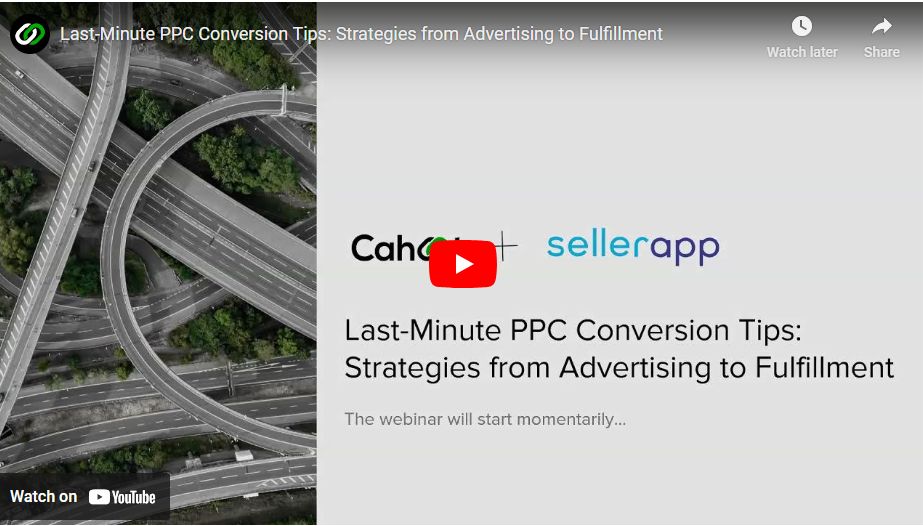
It’s not too late to make moves to improve conversion for the Q4 peak, so SellerApp and Cahoot are here with expert advice. In our free on-demand webinar, the founders of both firms covered pressing topics and provided actionable advice for how to maximize your Q4:
- Holiday Shopping – in October
- Basics of PPC
- Importance of Advertising Automation
- Q4 Last Minute Ad Improvements
- Early Selling & Fulfillment in Q4
- De-Risk Amazon FBA
Speakers

Dilip Vamanan, Co-Founder, SellerApp
Dilip Vamanan is the Co-Founder of SellerApp, a leading data analytics platform for Amazon sellers to scale their businesses and drive maximum ROI. A speaker at multiple renowned conferences like GMIC China, GMGC Malaysia, etc., he has over 13 years of experience in product development and global consulting and management. His current role and broad work experience in e-Commerce intelligence have enabled him to help Amazon sellers of all levels grow their business and gain a competitive edge in the industry.

Manish Chowdhary, Founder & CEO, Cahoot
Cahoot is the world’s first peer-to-peer eCommerce order fulfillment network. Cahoot enables eCommerce merchants to increase sales with affordable nationwide 1-day and 2-day delivery – everywhere they sell. Manish is a 40 Under 40 Competition Winner and holds an Honorary Doctorate from the University of Bridgeport. And, this year, Cahoot was recognized as one of Fast Company’s World’s Most Innovative Companies.

Turn Returns Into New Revenue

5 Strategies for Building an Efficient Supply Chain
In the fast-paced world of ecommerce, an efficient supply chain is an operational necessity. Customers expect fast, accurate, and cost-effective delivery, and businesses that fail to meet these expectations risk losing out to competitors. A well-optimized supply chain reduces operational costs, improves profit margins, and enhances overall customer satisfaction. However, building and maintaining an efficient supply chain requires strategic planning and the ability to create and maintain strong partnerships. Here, we discuss five key strategic goals that can help ecommerce sellers build a streamlined and effective supply chain.
1. Optimize Inventory Management
Effective inventory management may not be a flashy topic, but it is the foundation of a successful supply chain. Keeping too much inventory ties up capital, increases storage costs, and runs the risk of obsolescence. On the other hand, not having enough stock leads to stockouts, lost sales, and unhappy customers. Striking the right balance is key.
One way to achieve this is by using inventory management software that provides real-time visibility into stock levels. Advanced tools leverage demand forecasting algorithms to predict sales trends, helping businesses make informed purchasing decisions. By analyzing historical data, seasonal trends, and market shifts, ecommerce sellers can optimize stock levels and reduce waste.
Another essential practice is implementing a Just-In-Time (JIT) inventory approach, where stock is replenished only as needed. This minimizes excess inventory and reduces storage costs. However, JIT requires a reliable supplier network to avoid disruptions.
Additionally, conducting regular inventory audits ensures accuracy and prevents discrepancies that could lead to fulfillment issues. Businesses should also categorize inventory using methods like ABC analysis, where products are classified based on their value and turnover rates, allowing for more efficient resource allocation.
2. Leverage Third-Party Logistics (3PL) Providers
Many ecommerce businesses struggle with warehousing, order fulfillment, and shipping logistics. Partnering with a Third-Party Logistics (3PL) provider can alleviate these challenges and offer significant benefits. 3PL providers specialize in supply chain management, offering expertise, technology, and infrastructure that ecommerce businesses can leverage without the need for large upfront investments.
Outsourcing fulfillment operations to a 3PL enables businesses to scale efficiently. As order volumes fluctuate, 3PL providers can adjust storage and shipping resources accordingly. This flexibility is particularly valuable during peak seasons when demand surges. Additionally, 3PLs often have strategically located fulfillment centers, reducing shipping distances and delivery times. Additionally, integrating Transportation Management Systems (TMS) can further optimize logistics coordination, reduce costs, and improve delivery times.
Technology integration is a key advantage of working with a 3PL. Many providers offer robust logistics platforms that integrate seamlessly with ecommerce systems, providing real-time tracking, automated order processing, and analytics for improved decision-making. By leveraging these resources, ecommerce businesses can enhance their logistics operations and focus on core growth strategies like marketing and product development.
Make Returns Profitable, Yes!
Cut shipping and processing costs by 70% with our patented peer-to-peer returns solution. 4x faster than traditional returns.
See How It Works3. Implement Advanced Technology Solutions
Technology plays a crucial role in modern supply chain management. From artificial intelligence (AI) to automation, technological advancements are reshaping how ecommerce businesses manage logistics, inventory, and fulfillment.
AI-powered demand forecasting is a game-changer for supply chain efficiency. By analyzing market trends, consumer behavior, and historical data, AI can predict demand fluctuations with remarkable accuracy. This allows businesses to proactively adjust inventory levels, preventing stockouts and excess inventory.
Automation in warehouses is another powerful strategy to enhance efficiency. Automated storage and retrieval systems (AS/RS), robotic picking and packing solutions, and conveyor belt systems streamline operations, reducing human errors and increasing processing speed. Automation not only enhances efficiency but also lowers labor costs and minimizes the risk of workplace injuries.
Blockchain technology is also emerging as a valuable tool for supply chain transparency and security. By recording transactions on an immutable ledger, businesses can track the movement of goods from suppliers to customers, ensuring authenticity and reducing fraud risks.
Additionally, ecommerce businesses should invest in data analytics platforms to monitor key performance indicators (KPIs) like order accuracy, shipping times, and fulfillment costs. Continuous monitoring enables data-driven optimizations that improve overall supply chain performance.
4. Enhance Supplier Relationships
Ecommerce businesses depend on suppliers for raw materials, manufacturing, and distribution, and any disruption can have cascading effects on operations, making supplier relationships fundamental to a resilient and efficient supply chain.
Building strong supplier relationships starts with open communication. Regular check-ins, performance reviews, and transparent discussions about expectations help create a collaborative partnership. Establishing clear service-level agreements (SLAs) ensures suppliers adhere to quality and delivery standards.
Diversifying suppliers is another crucial strategy. Relying on a single supplier for key products is risky; any disruption—such as geopolitical issues, natural disasters, or financial instability—could halt operations. By sourcing from multiple suppliers, businesses can mitigate these risks and ensure continuity.
Collaborative forecasting is another effective practice. Sharing sales projections with suppliers allows them to align production schedules, reducing lead times and improving efficiency. Many successful ecommerce brands establish long-term partnerships with suppliers, leading to better pricing, priority service, and increased reliability.
Convert Returns Into New Sales and Profits
Our peer-to-peer returns system instantly resells returned items—no warehouse processing, and get paid before you refund.
I'm Interested in Peer-to-Peer Returns5. Streamline Warehouse Operations
A well-organized warehouse is vital for efficient order fulfillment. Poor warehouse management leads to delays, errors, and increased costs. To optimize warehouse operations, businesses should focus on layout, technology, and workforce training.
A strategically designed warehouse layout minimizes unnecessary movement. Grouping high-demand products near packing stations and organizing inventory based on order frequency speeds up the picking process. A Warehouse Management System (WMS) is a powerful tool for optimizing storage, tracking stock levels, and managing labor resources. Many modern WMS solutions use AI and machine learning to analyze order patterns and recommend the most efficient storage locations.
Training warehouse staff is equally important. Employees should be well-versed in handling technology, safety procedures, and best practices to maximize productivity. Regular performance assessments help identify bottlenecks and areas for improvement.
Finally, implementing lean warehouse principles—such as reducing waste, optimizing workflows, and continuously improving processes—can drive long-term efficiency. Many successful ecommerce companies adopt Kaizen methodologies, where small, incremental improvements are consistently made to enhance operations.
Conclusion
Building an efficient supply chain is not a one-time effort but an ongoing process of refinement and adaptation. Ecommerce businesses must continuously evaluate their logistics, inventory management, supplier relationships, and technological investments to stay ahead in a competitive landscape.
By optimizing inventory management, leveraging 3PL providers, implementing advanced technology, strengthening supplier relationships, and streamlining warehouse operations, ecommerce sellers can create a supply chain that is both resilient and efficient. The result is a more agile business that delivers superior customer experiences at lower cost, sustaining long-term growth.

Turn Returns Into New Revenue

Ecommerce Success Is Killing The Economics Of Cheap Home Delivery
In this article
In years past, most parcel packages were shipped to warehouses and facilities in bulk, allowing sellers and parcel companies to achieve economies of scale. The greater volume delivered to the same or fewer destinations, the more cost savings could be achieved per package.
But today, growth in e-commerce continues to accelerate direct-to-household purchase volumes. Shipping to more individual locations has reduced distribution scale for sellers, increasing per-unit ecommerce order fulfillment costs.
Reducing these costs can go a long way towards sustaining the new status quo of faster shipping across more widely distributed destinations. Achieving this without passing on cost increases to customers through price hikes will likely require a sharper focus on leveraging data to optimize delivery networks. As use of algorithms and forecast accuracy increase, it will become easier to plan for weekly and seasonal volatility, choose optimal routes, appropriately utilize facilities and assets, and shift personnel around as needed to bring down the cost of last-mile delivery.

Turn Returns Into New Revenue


